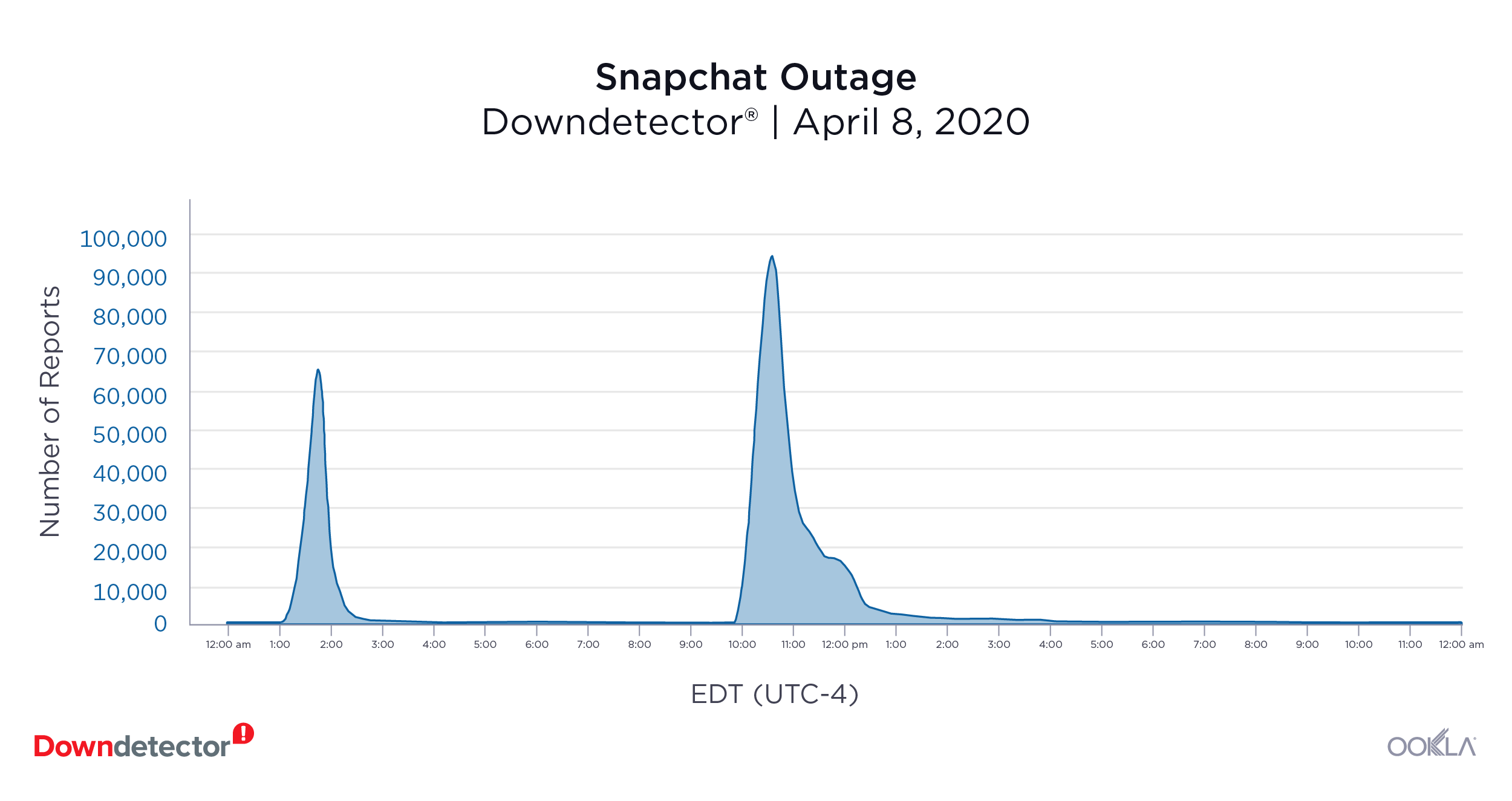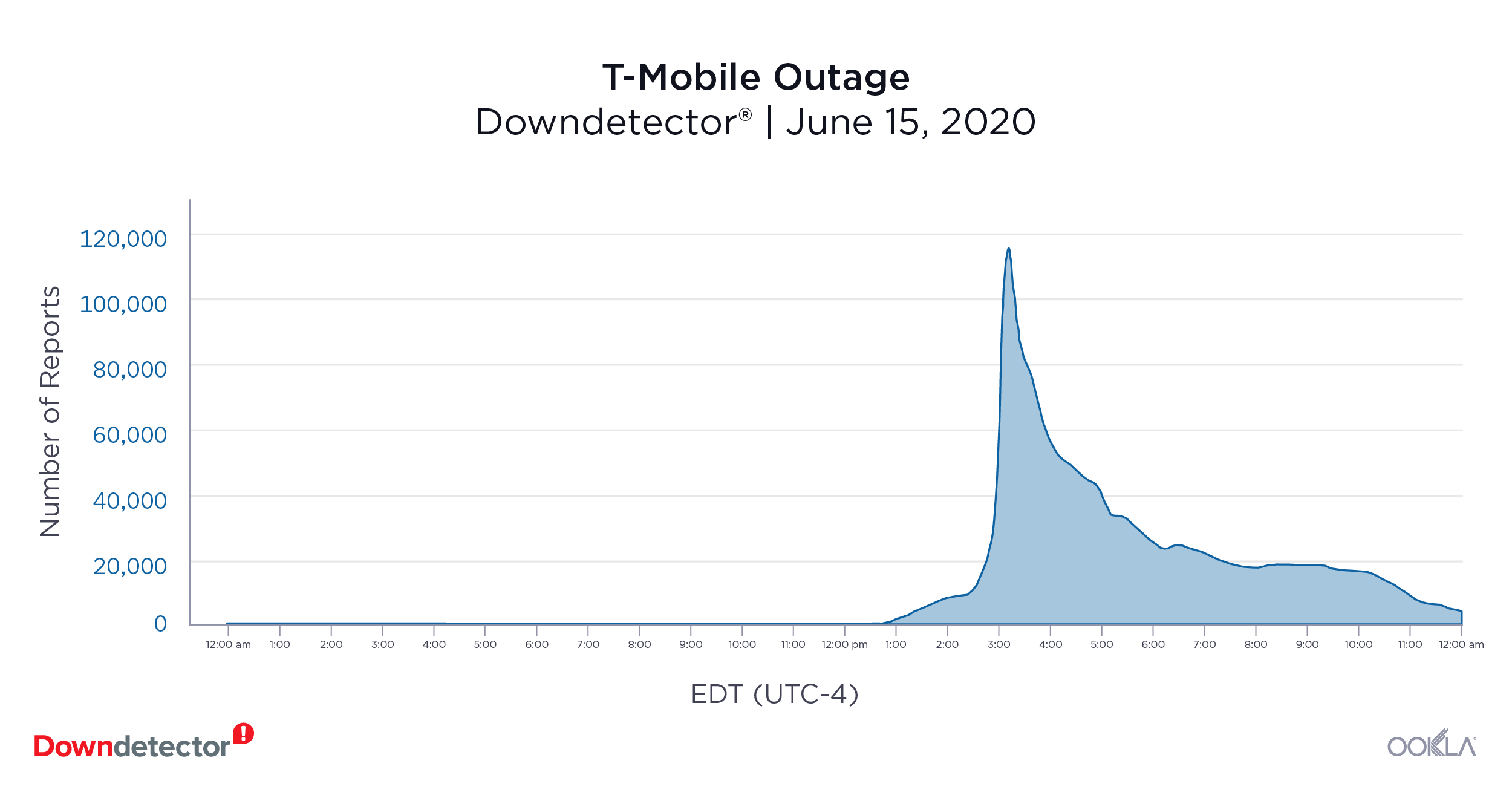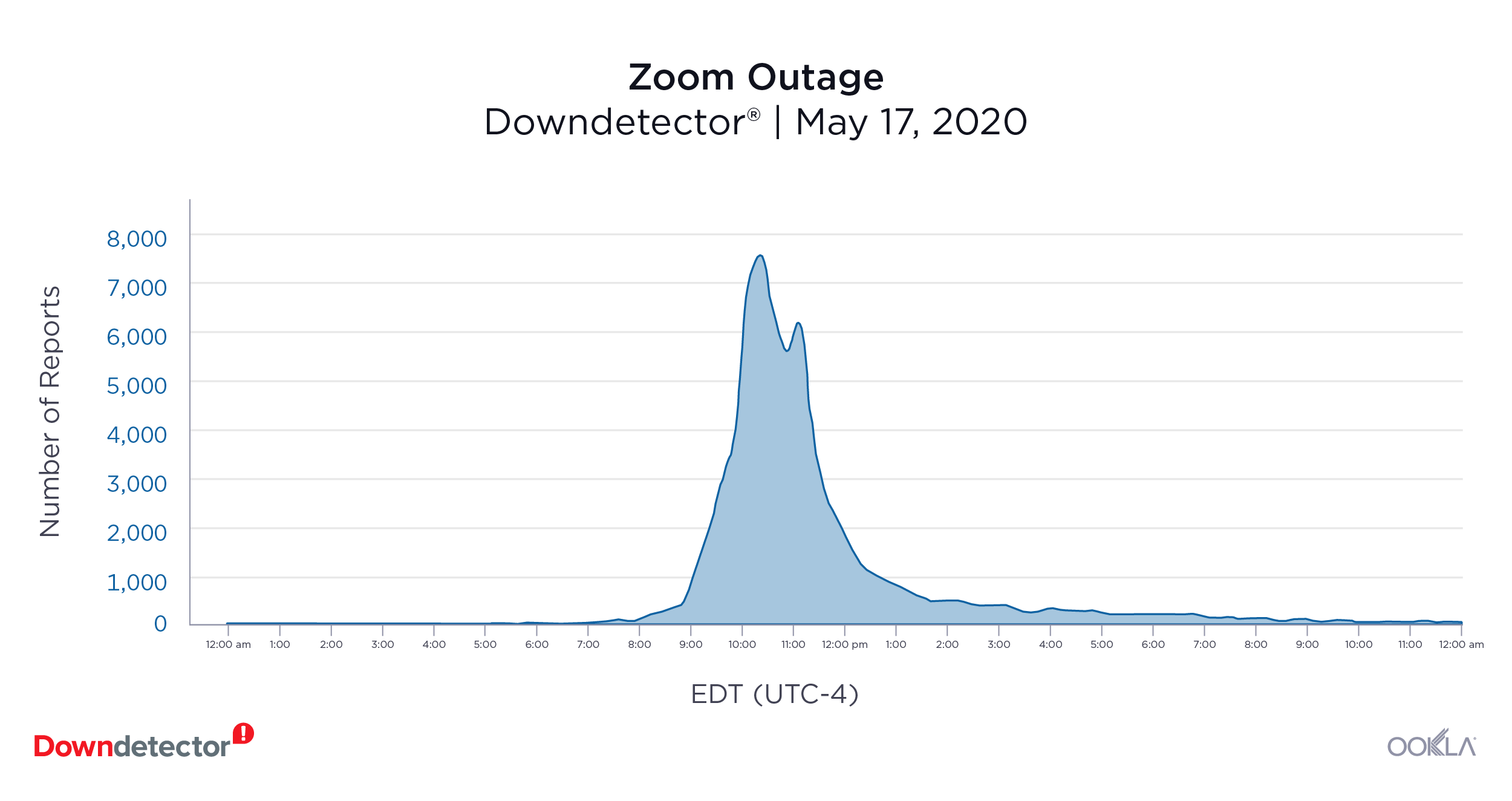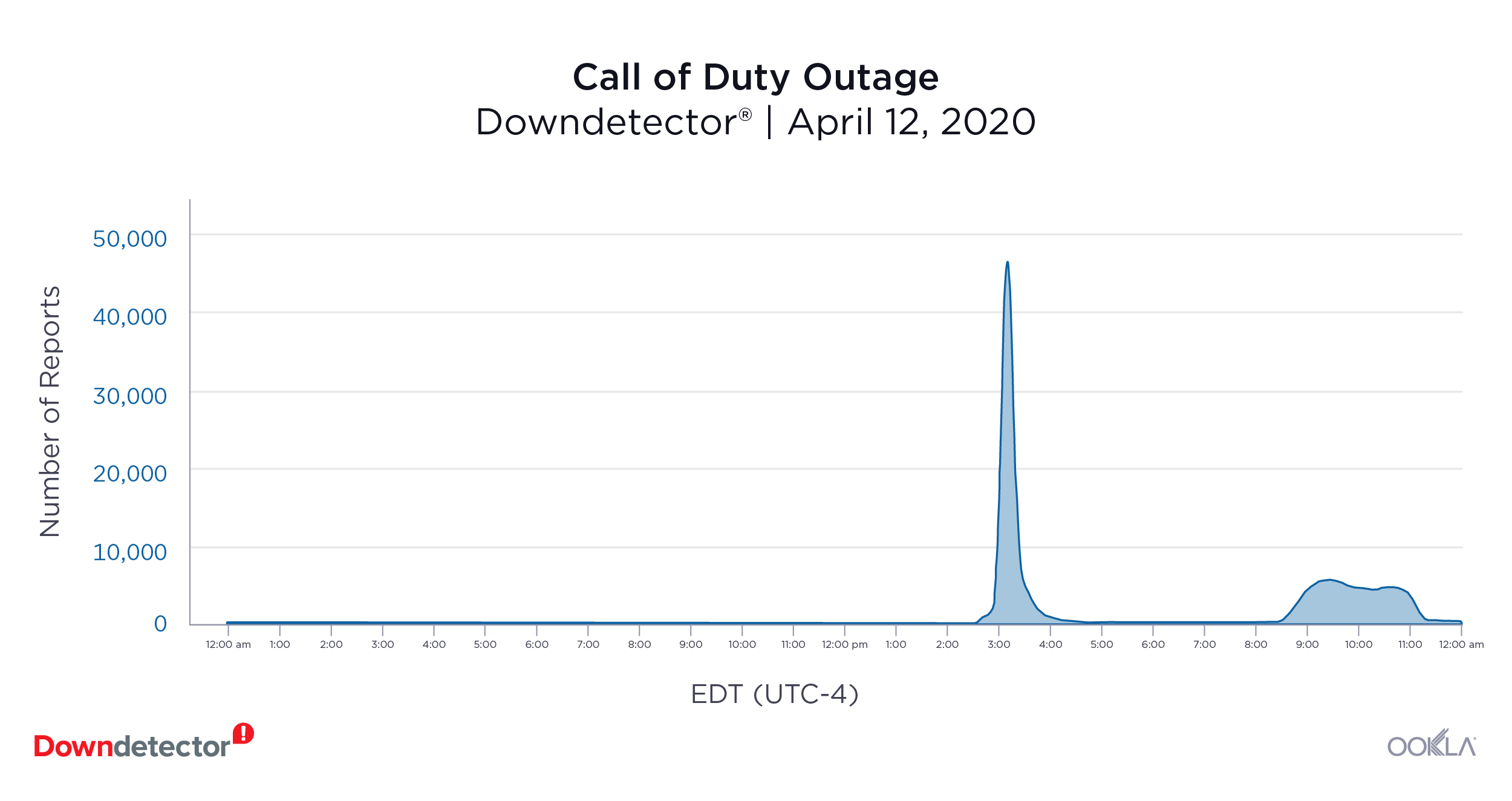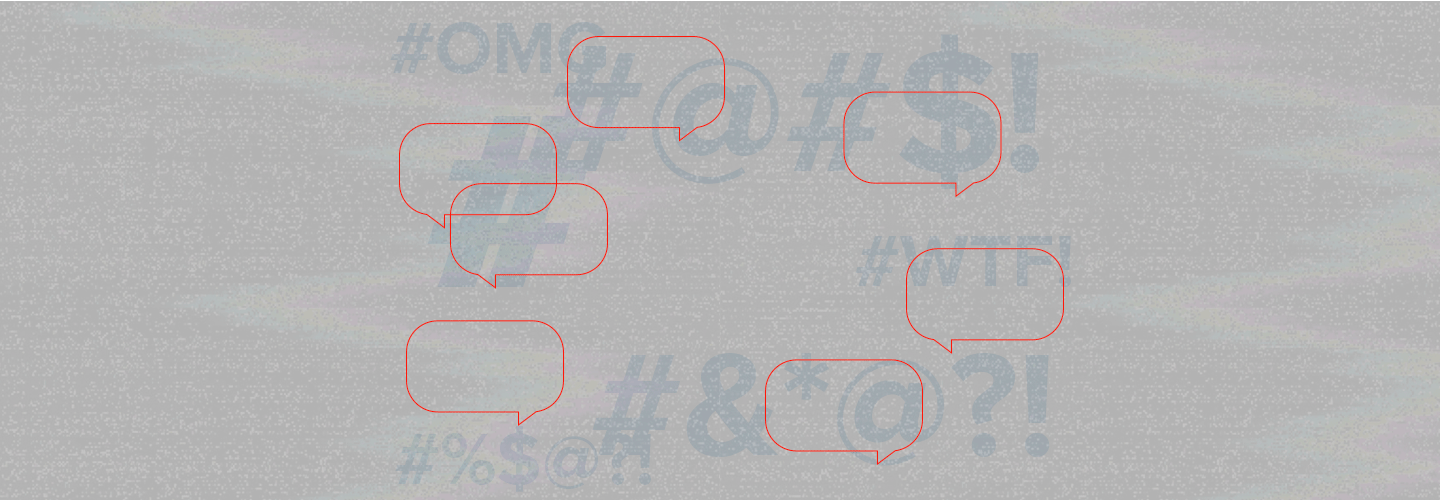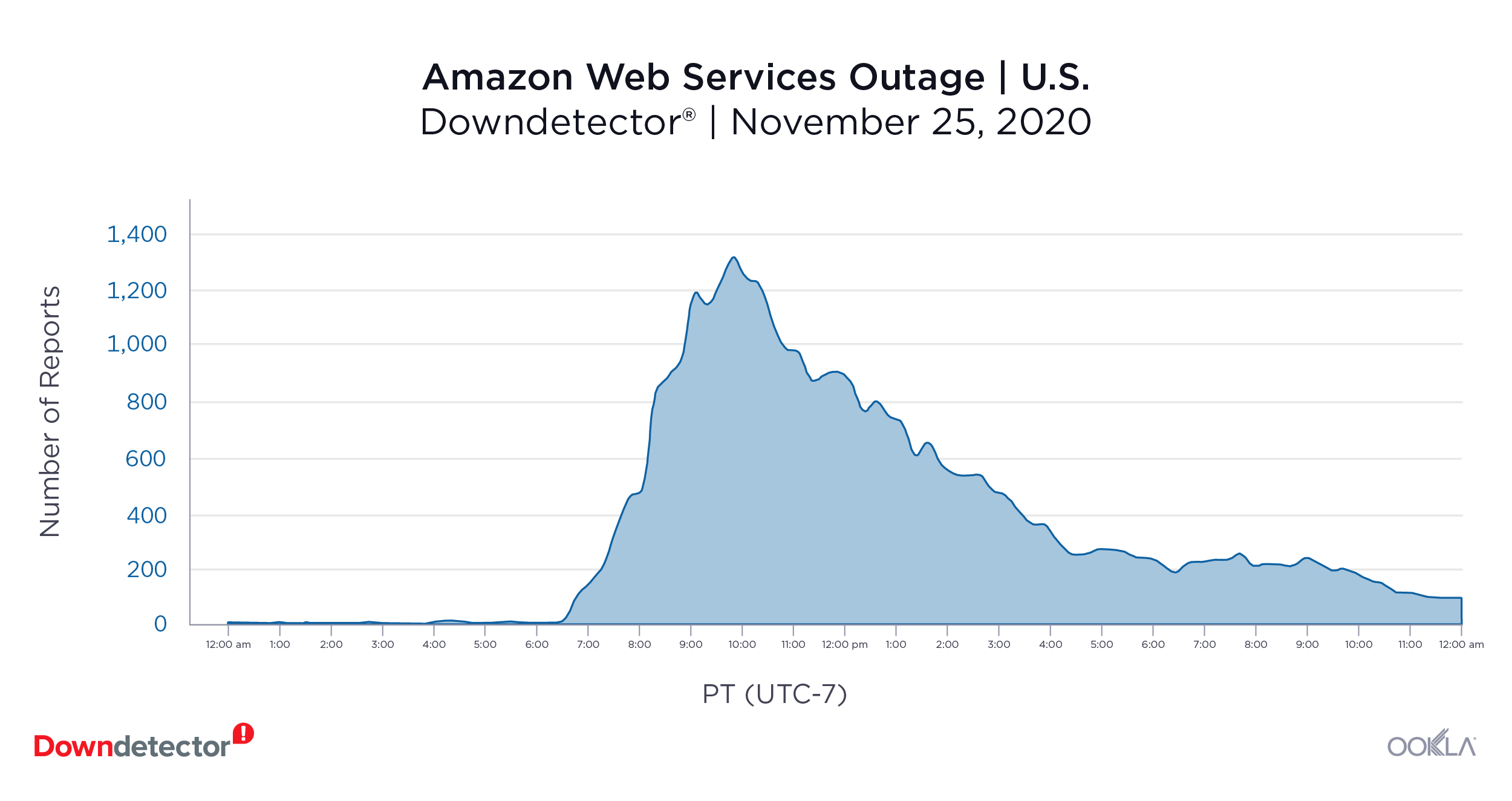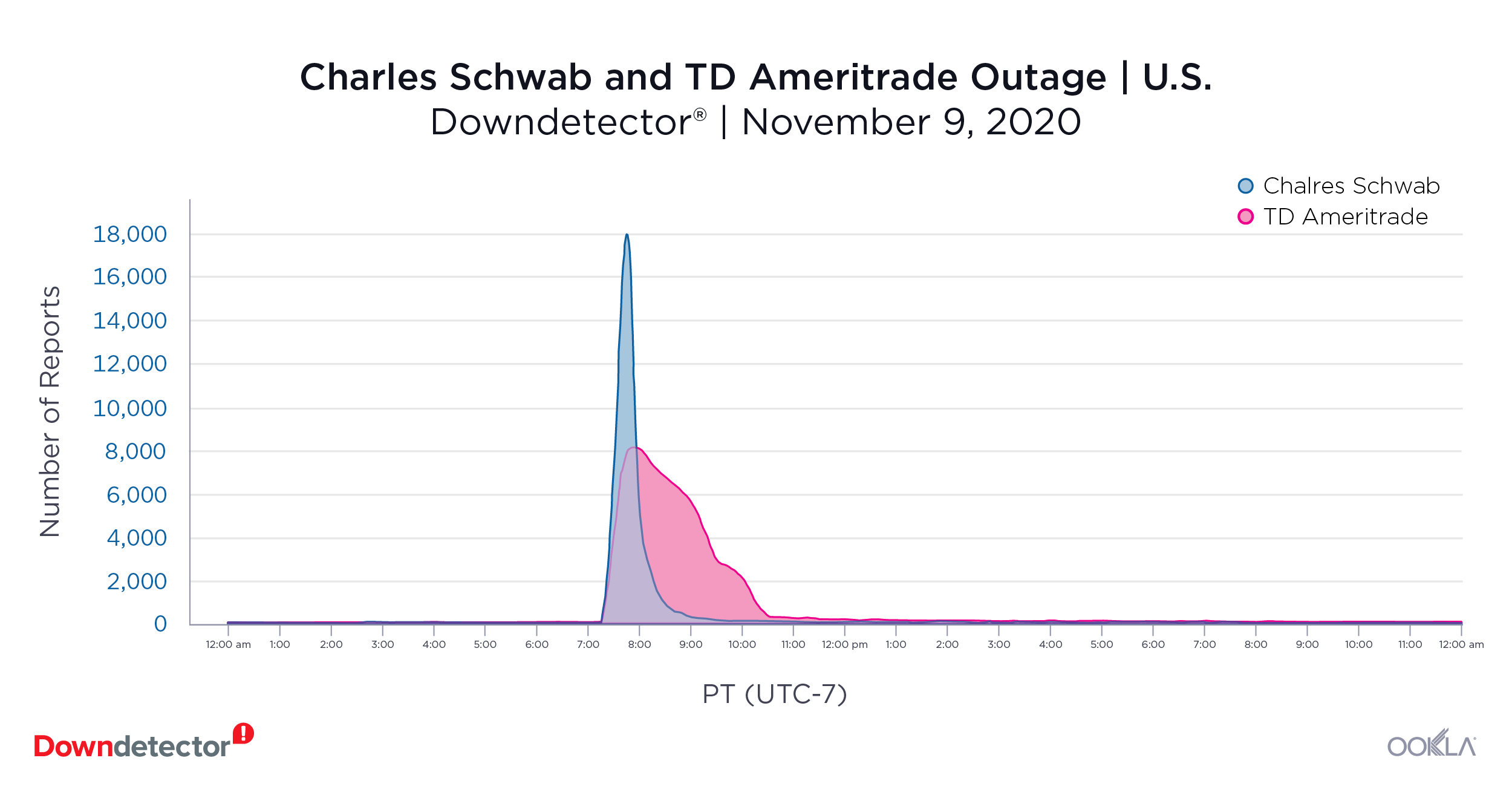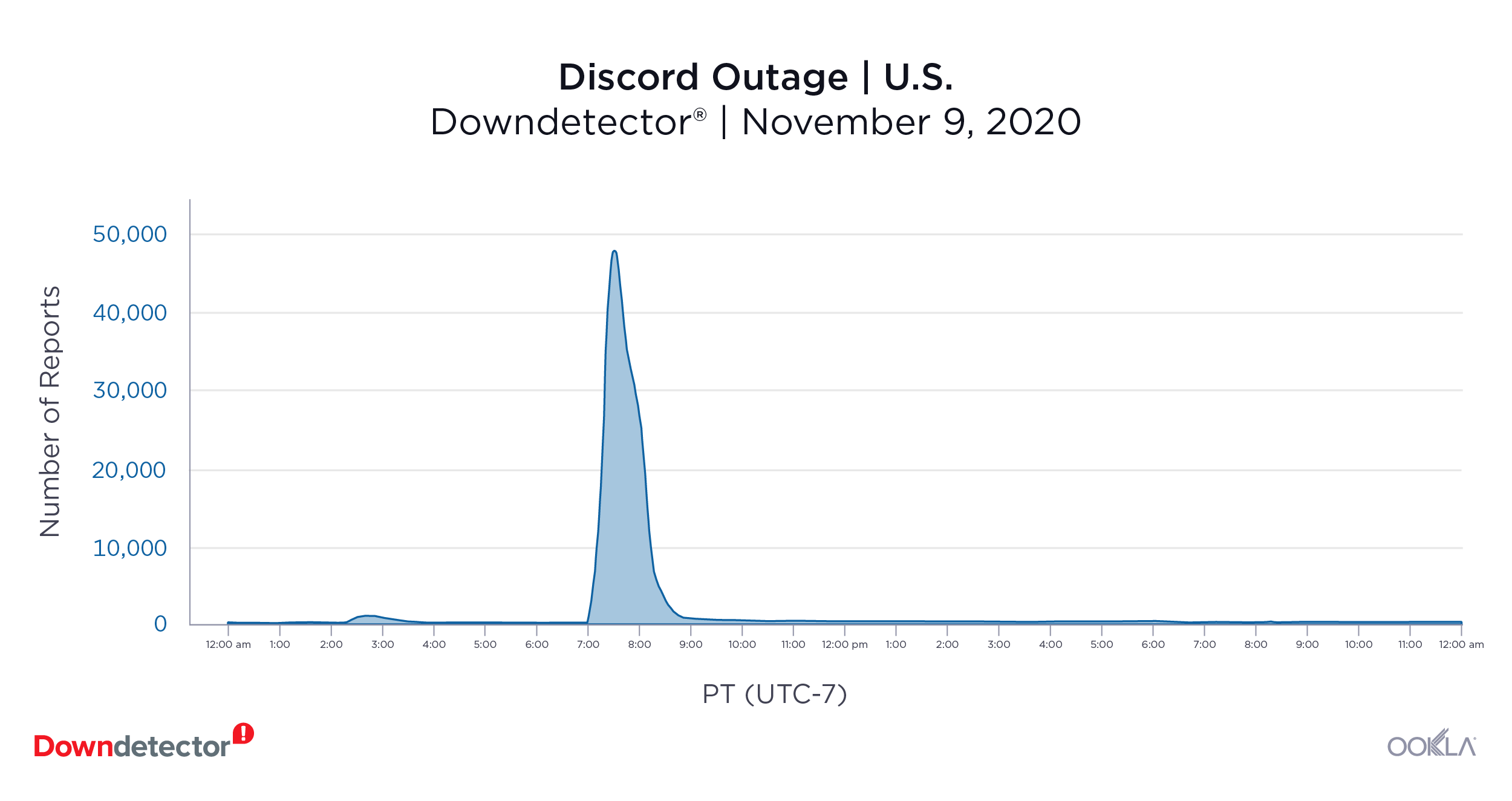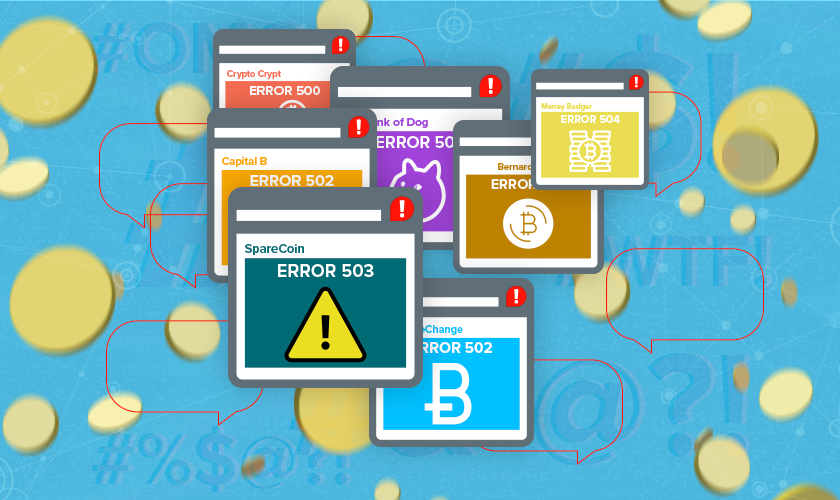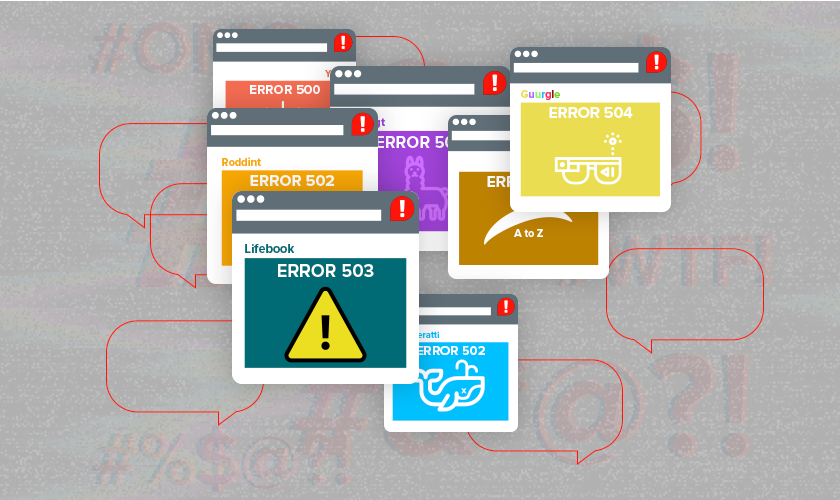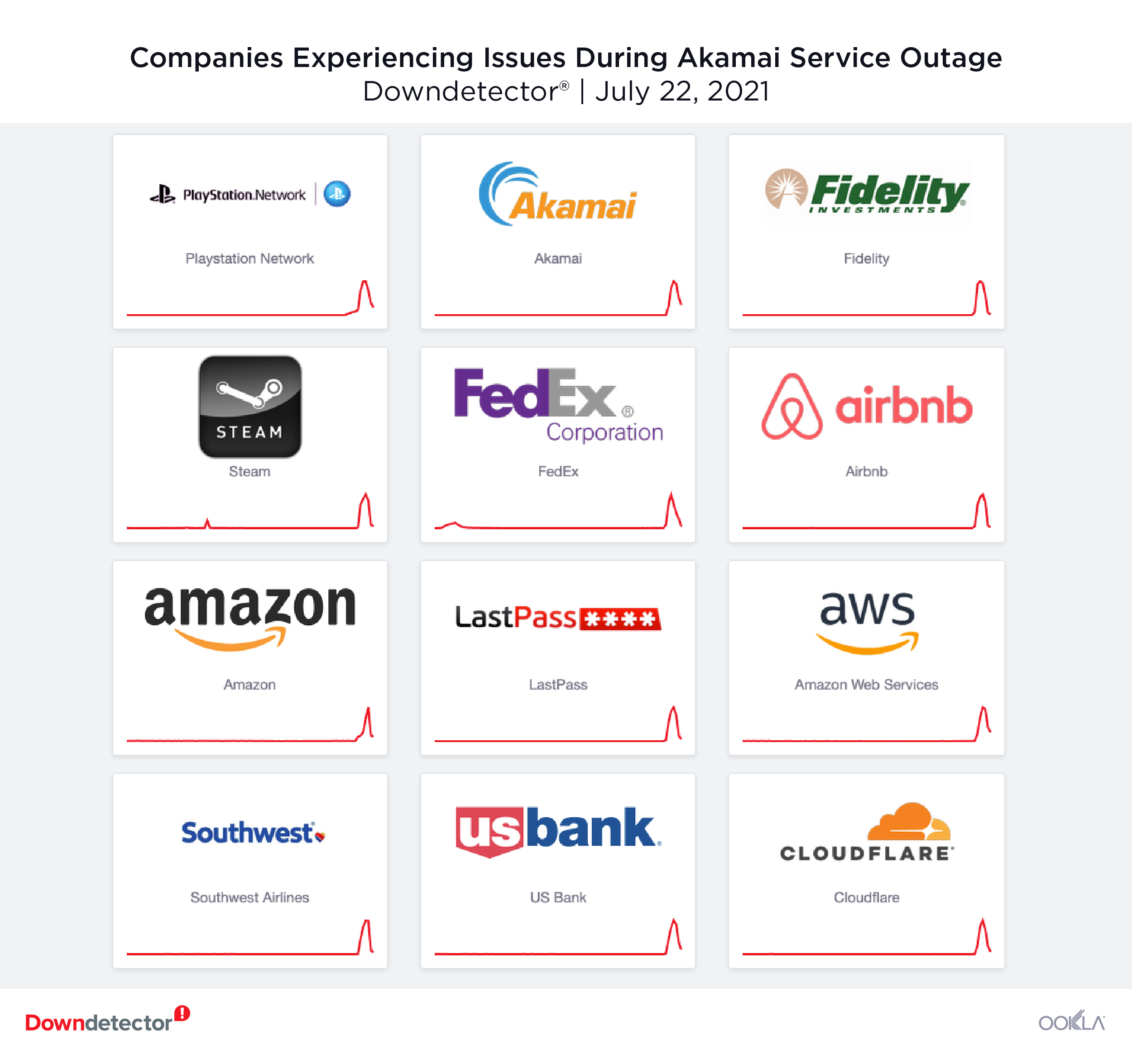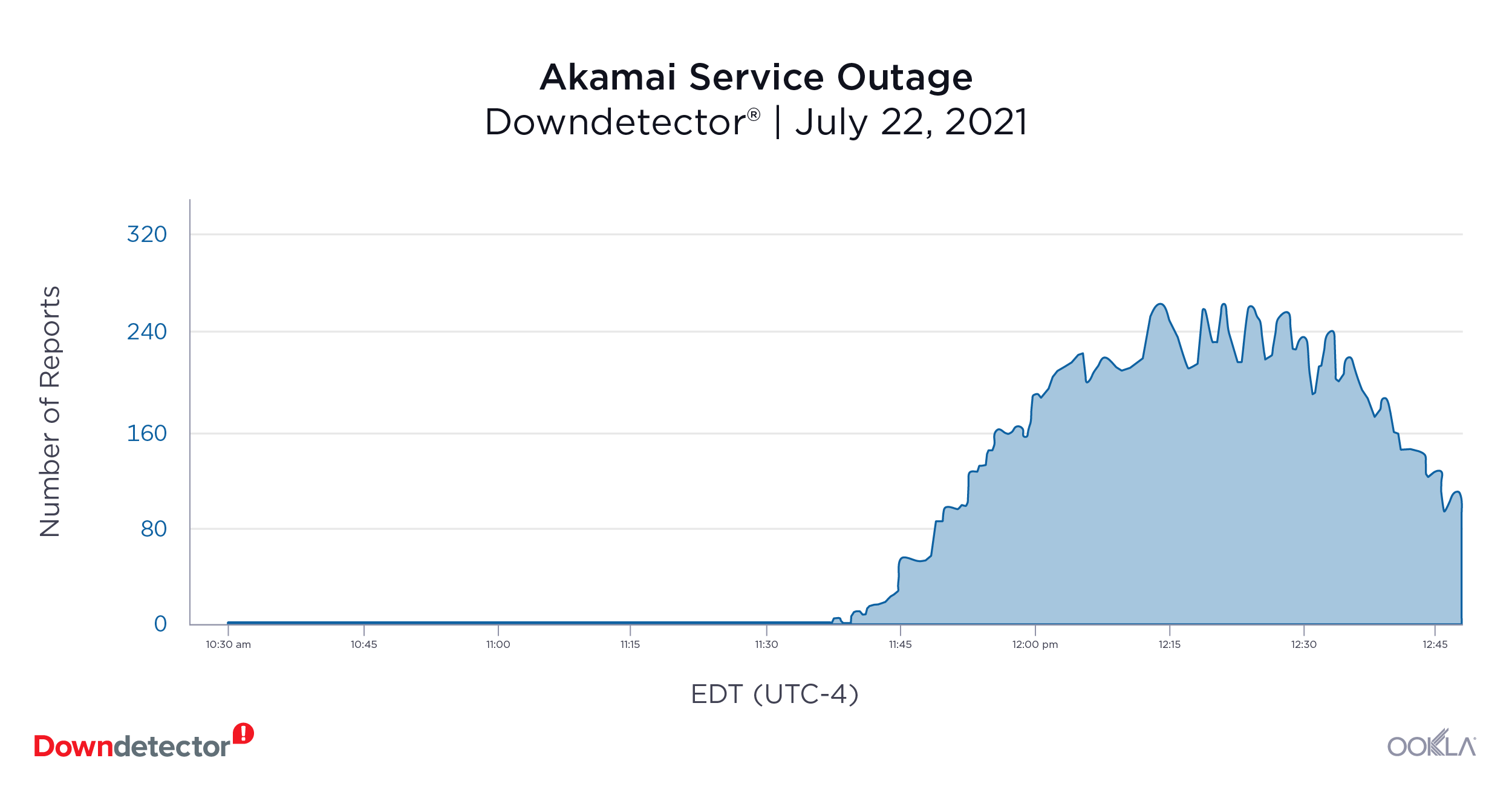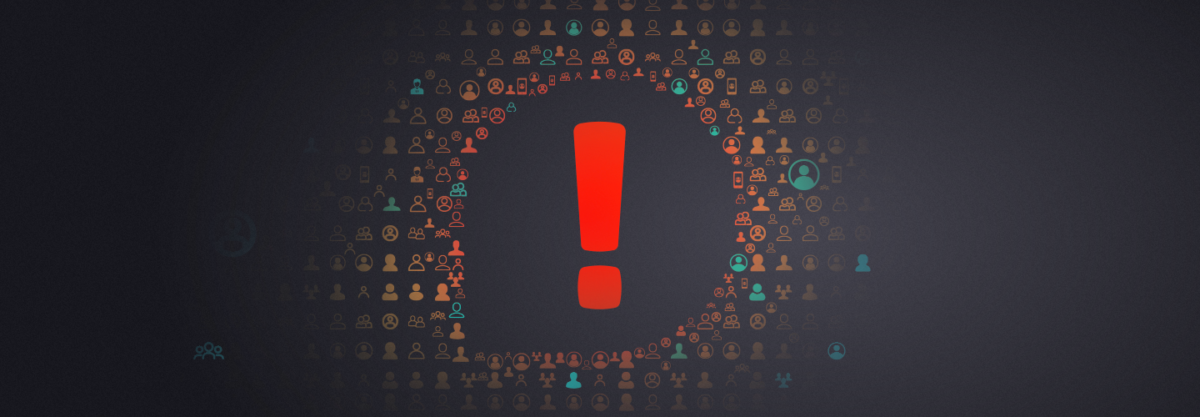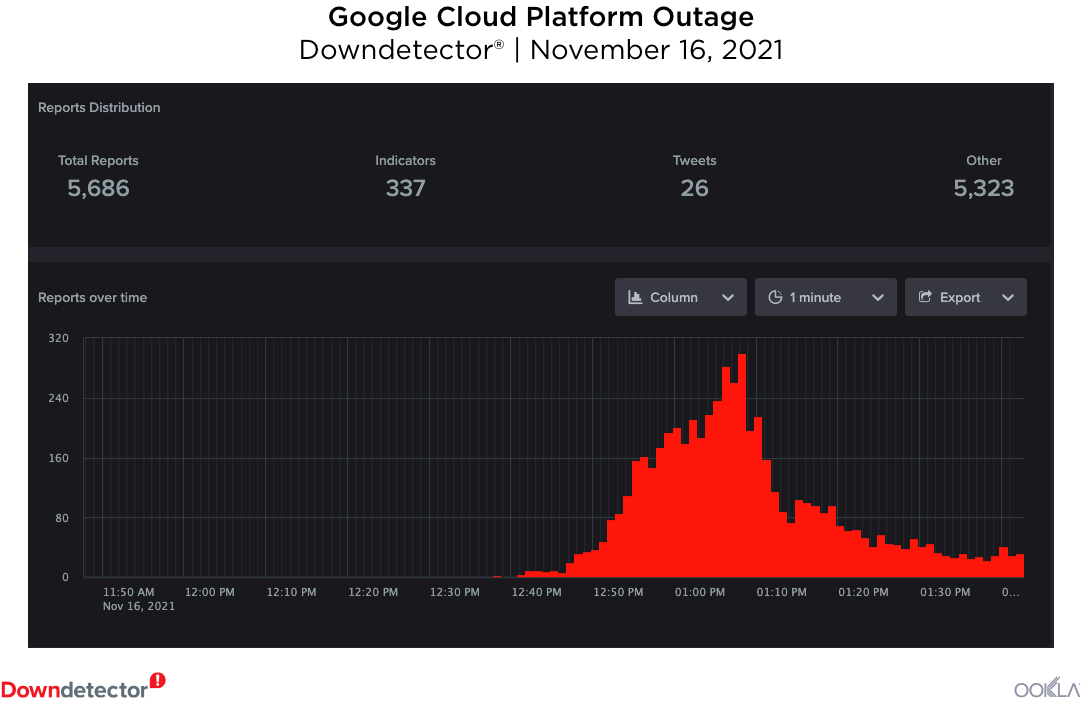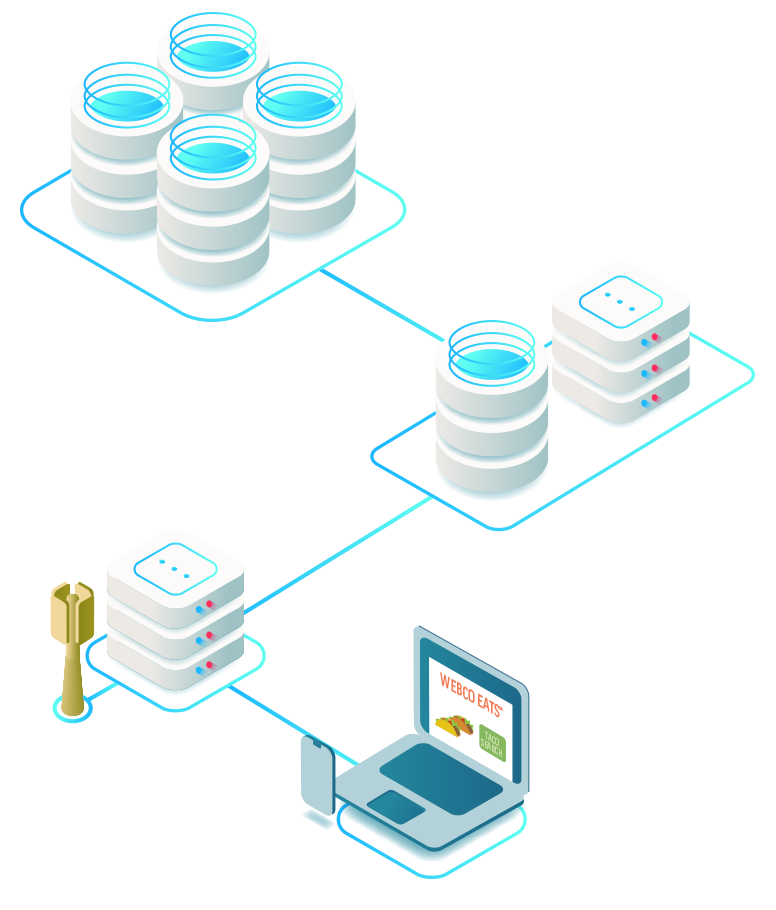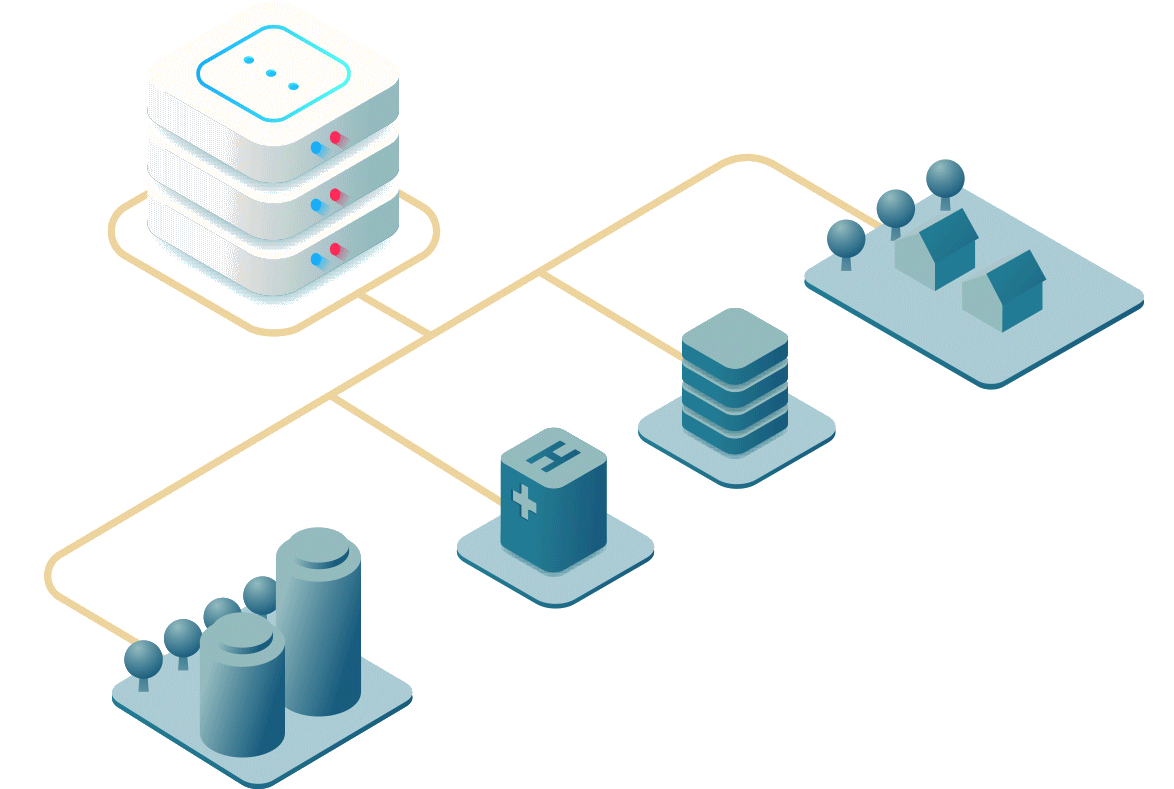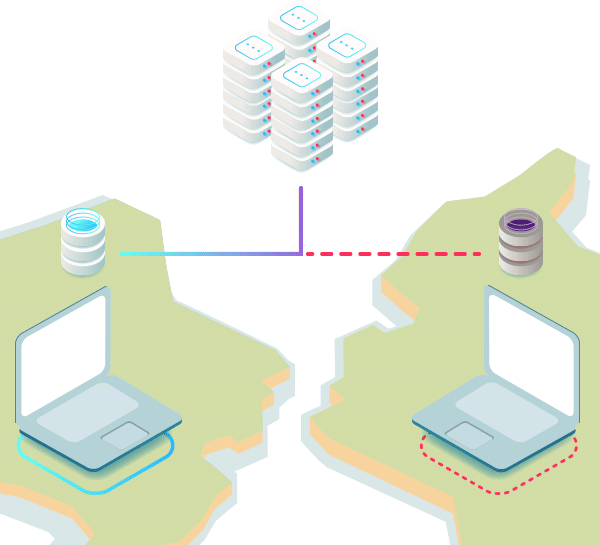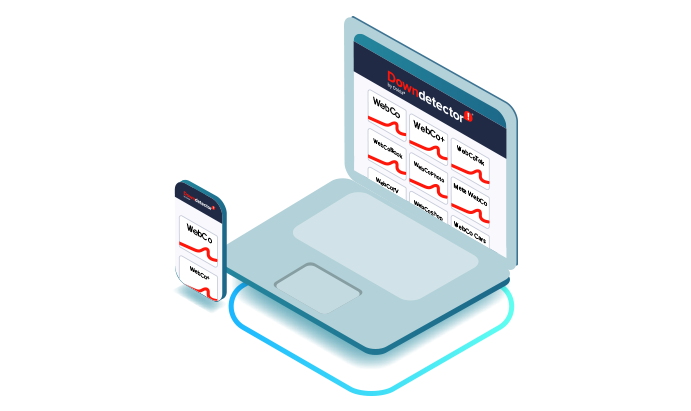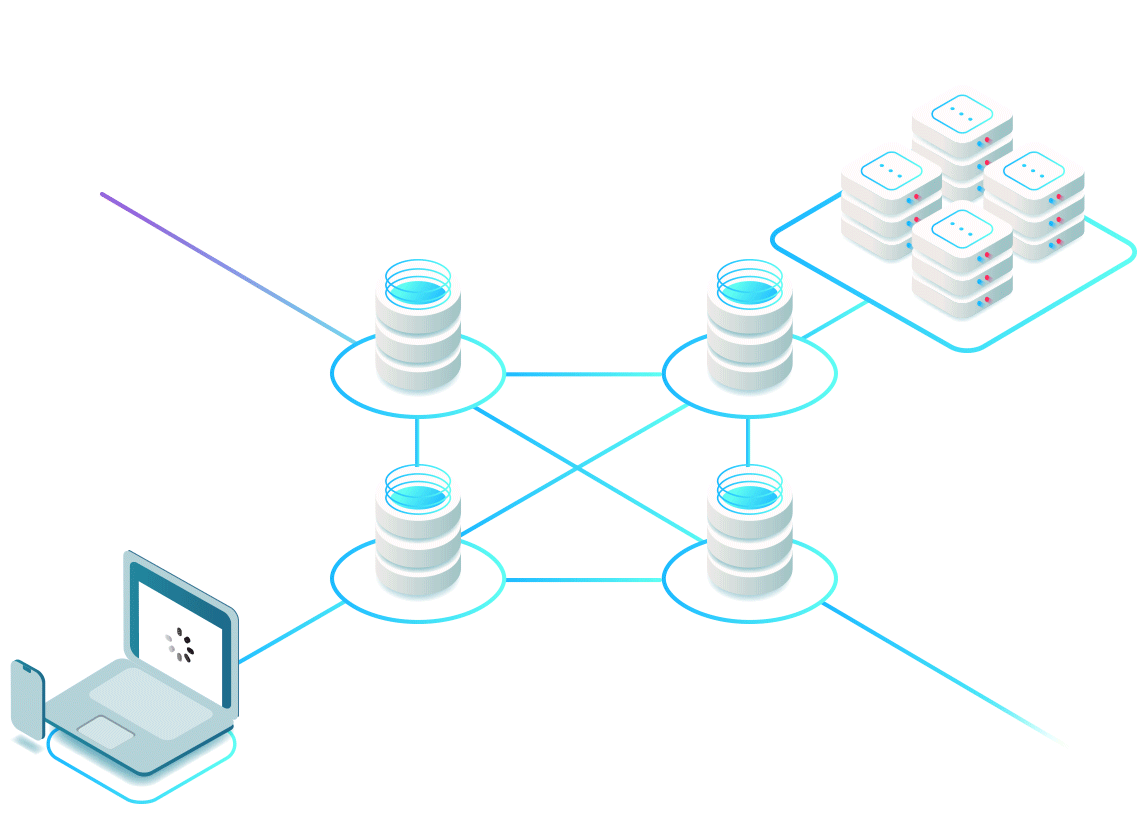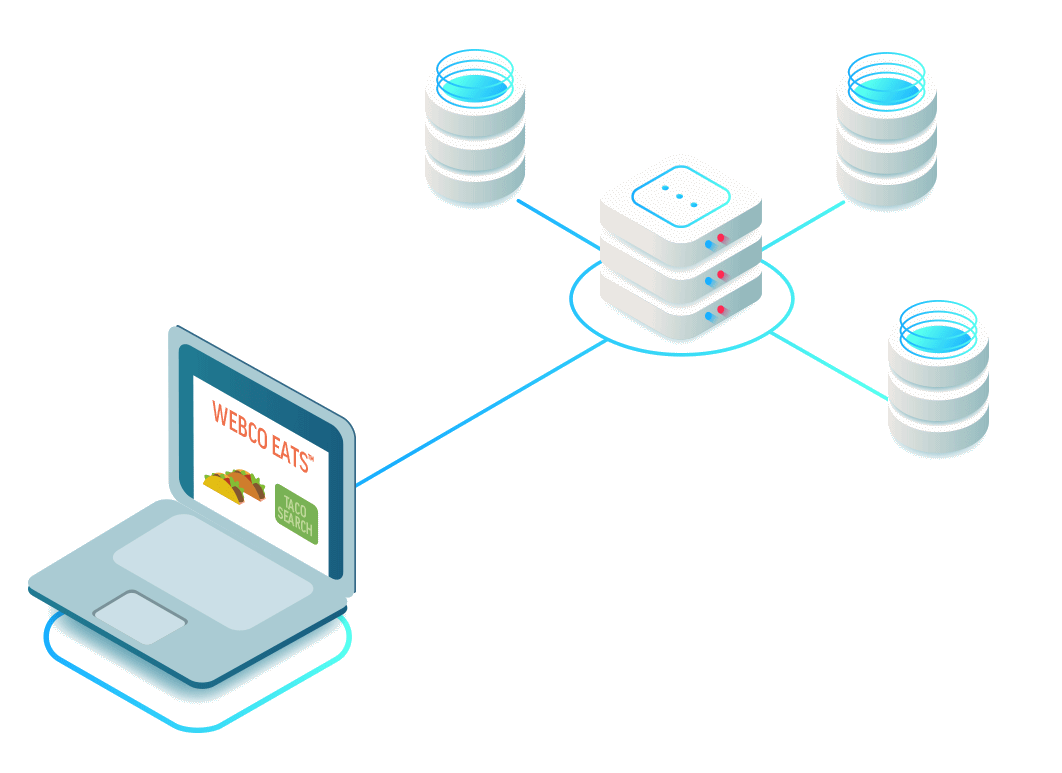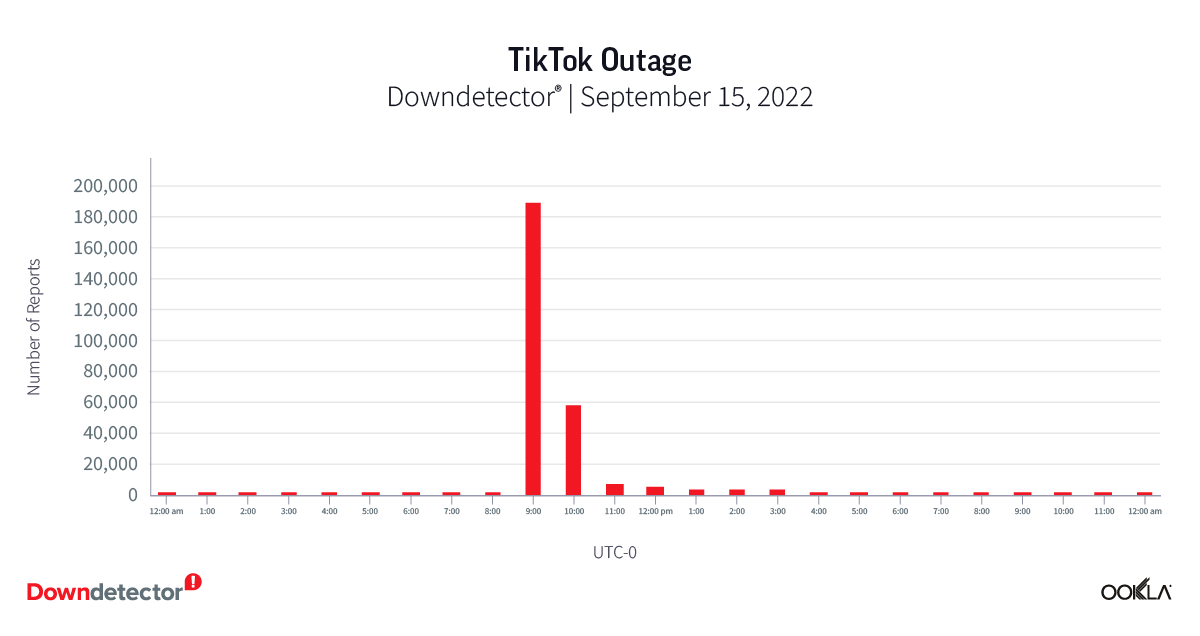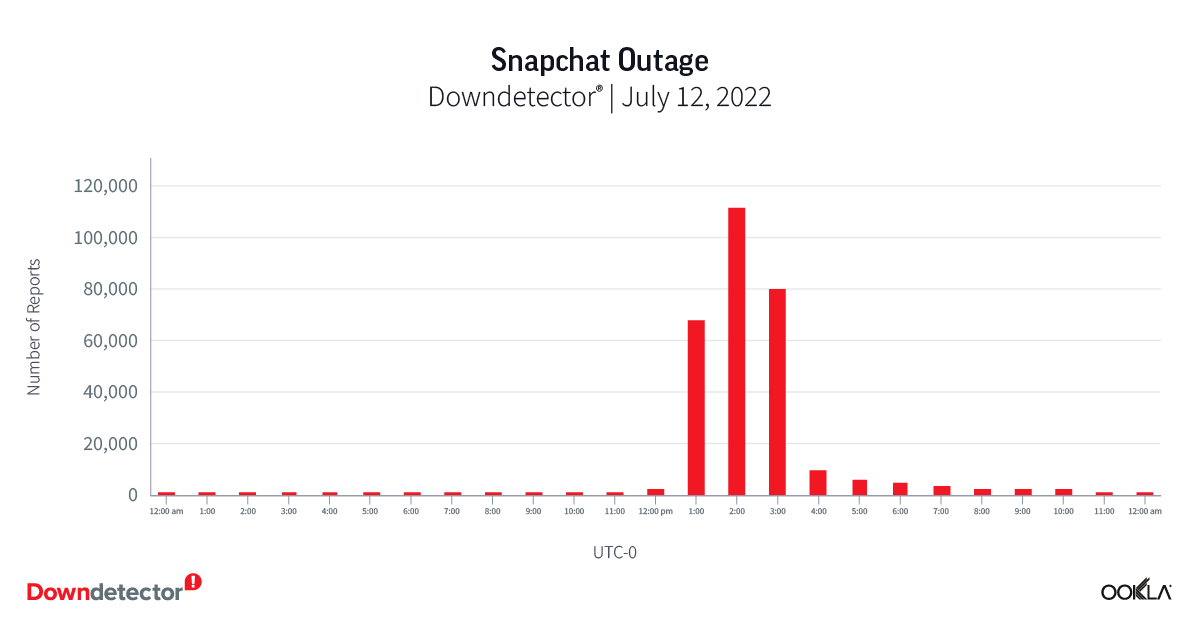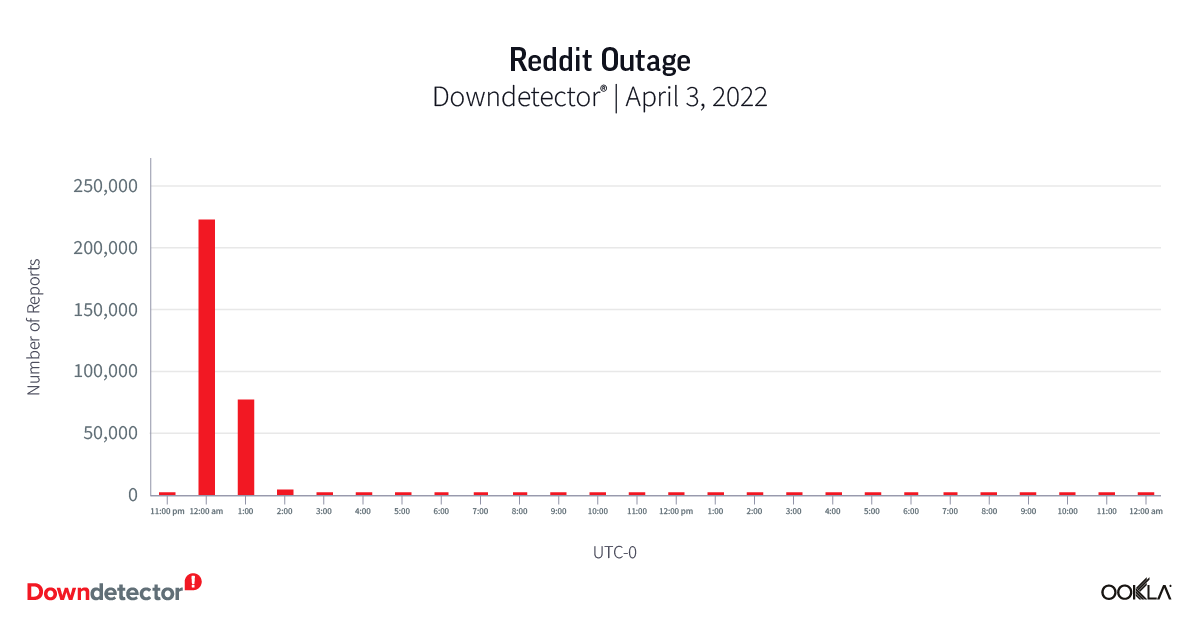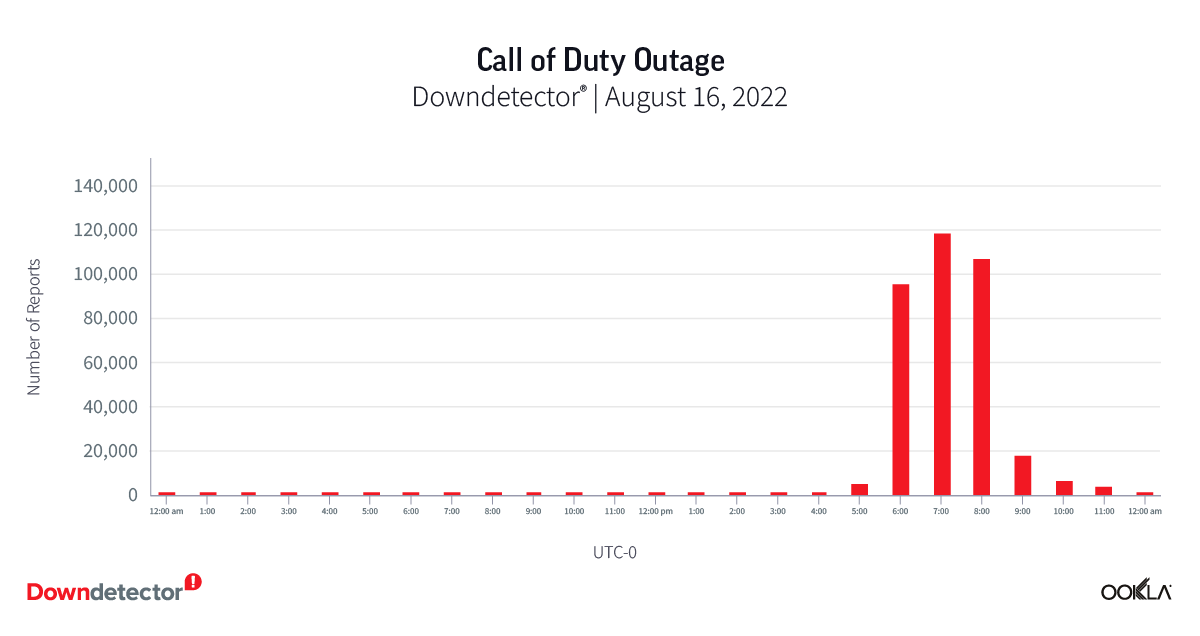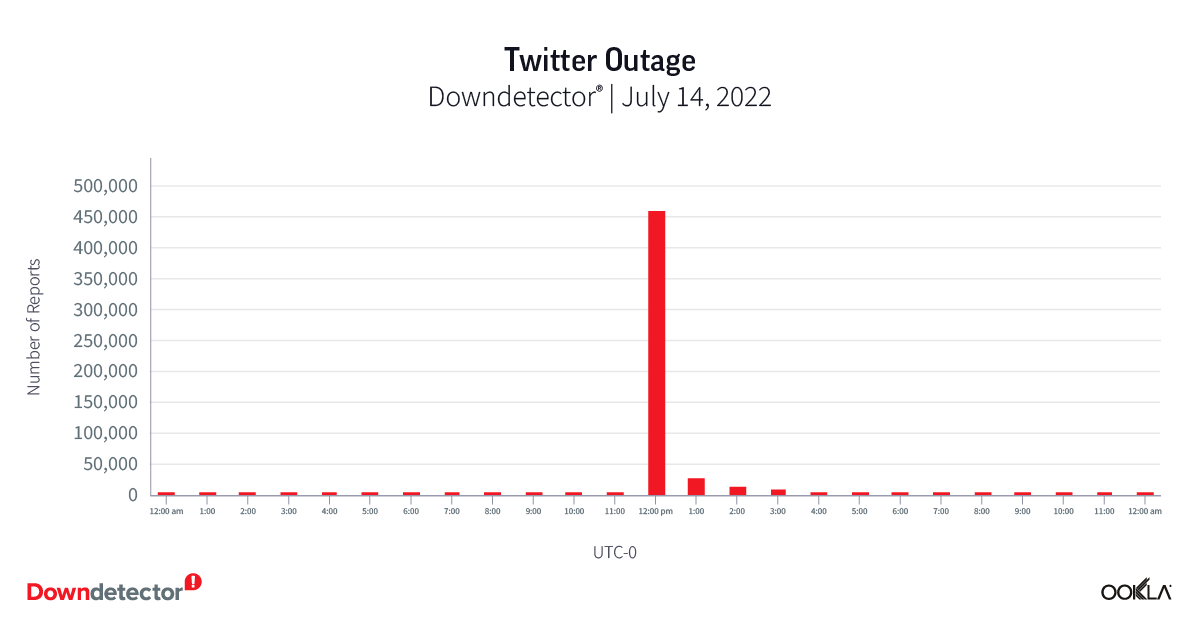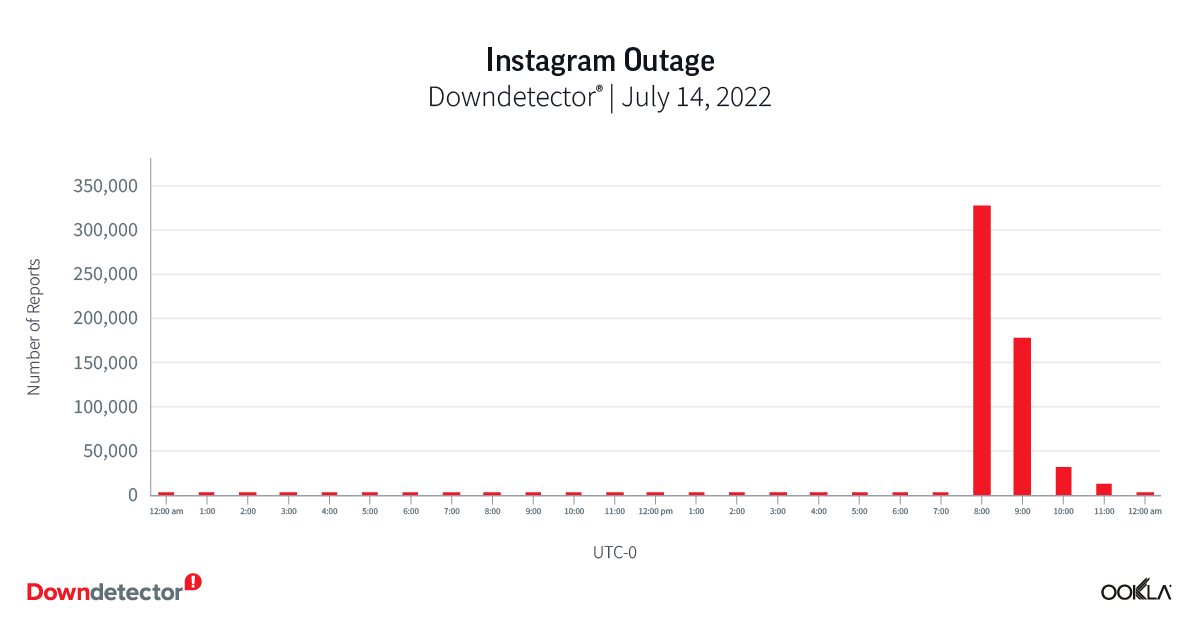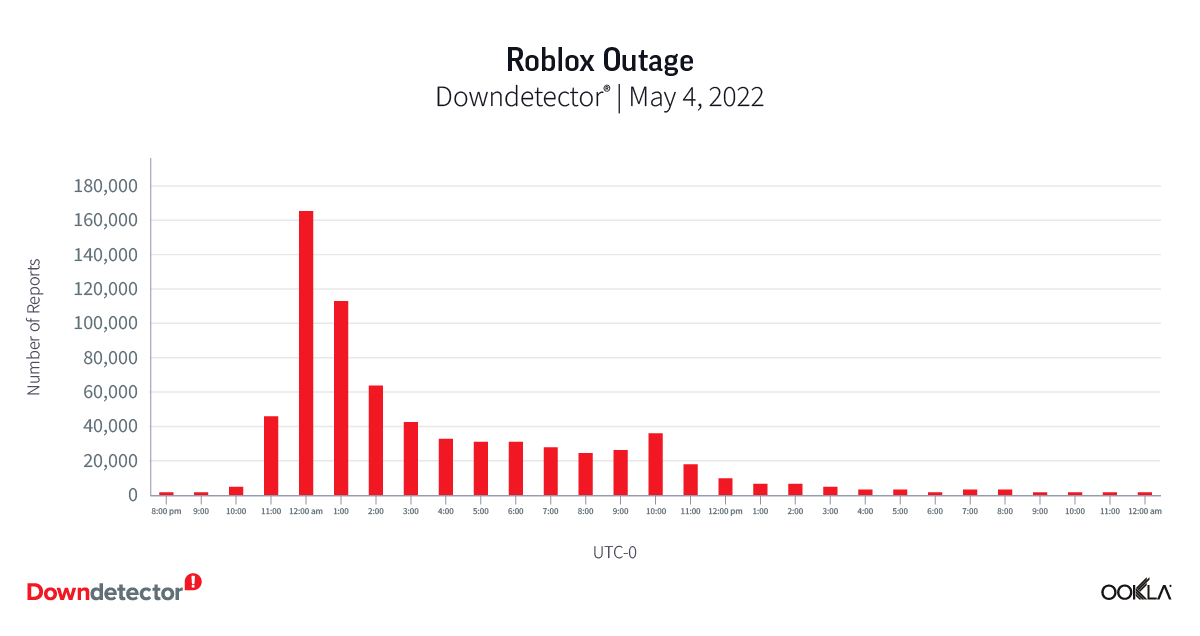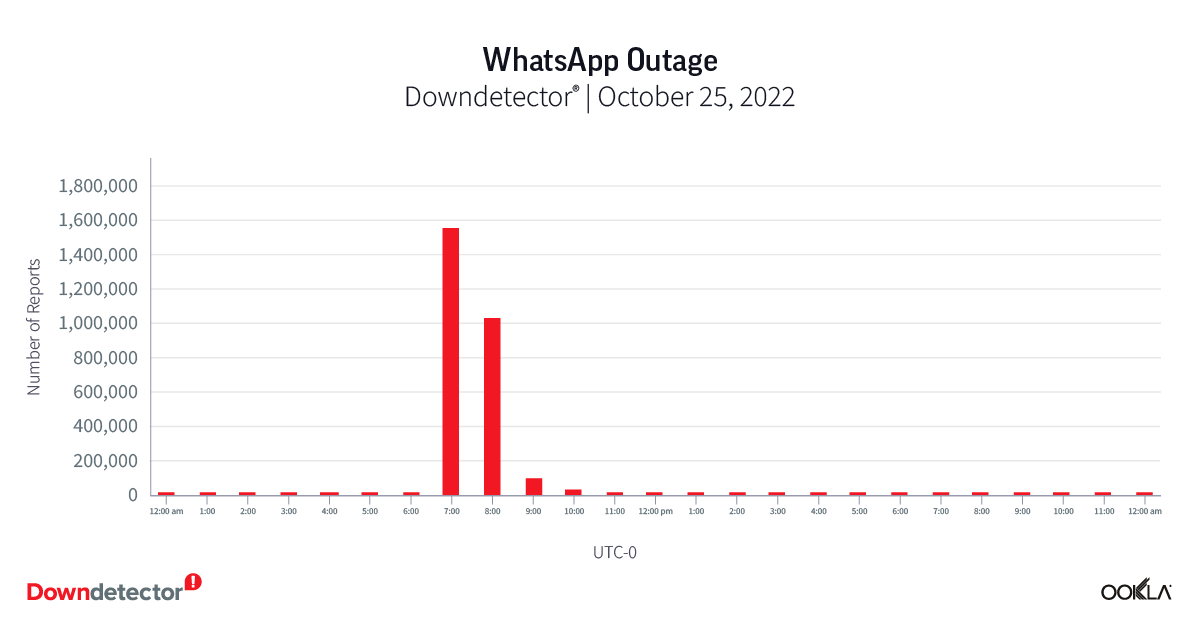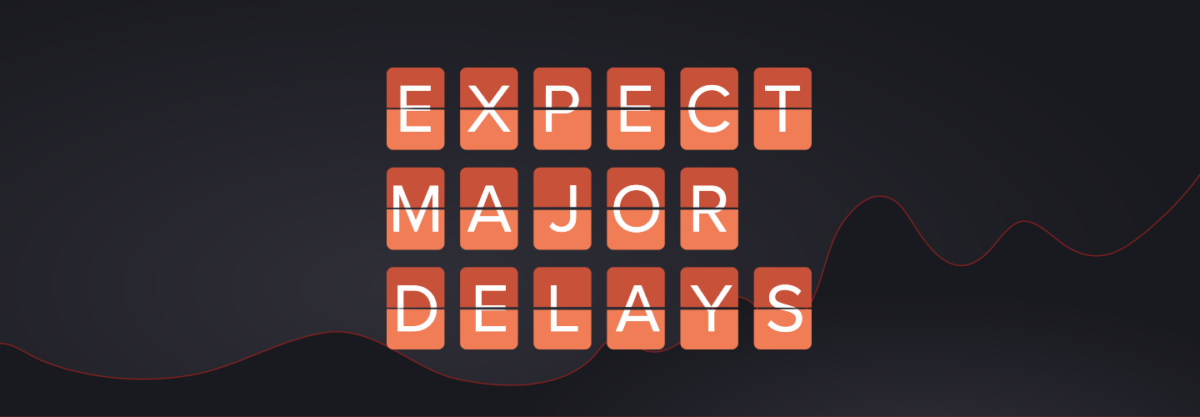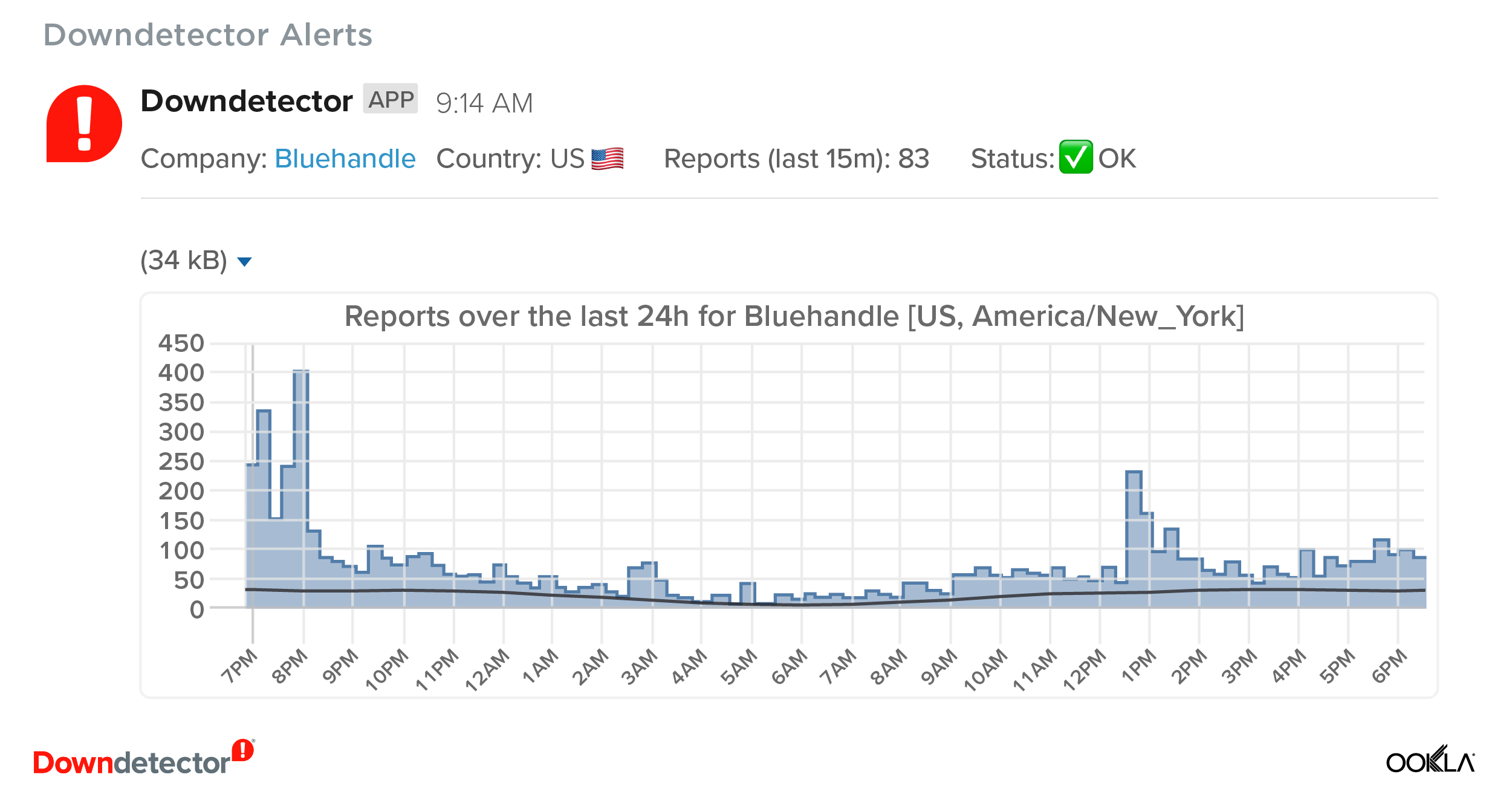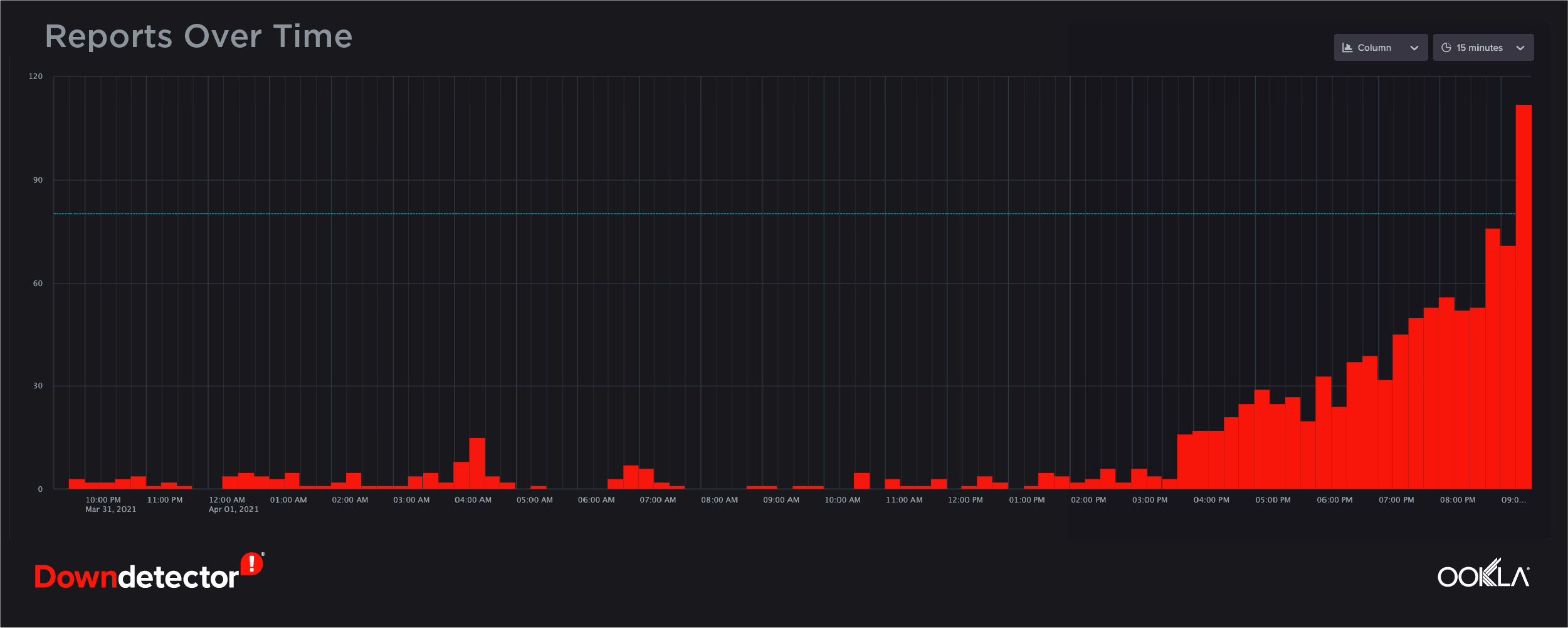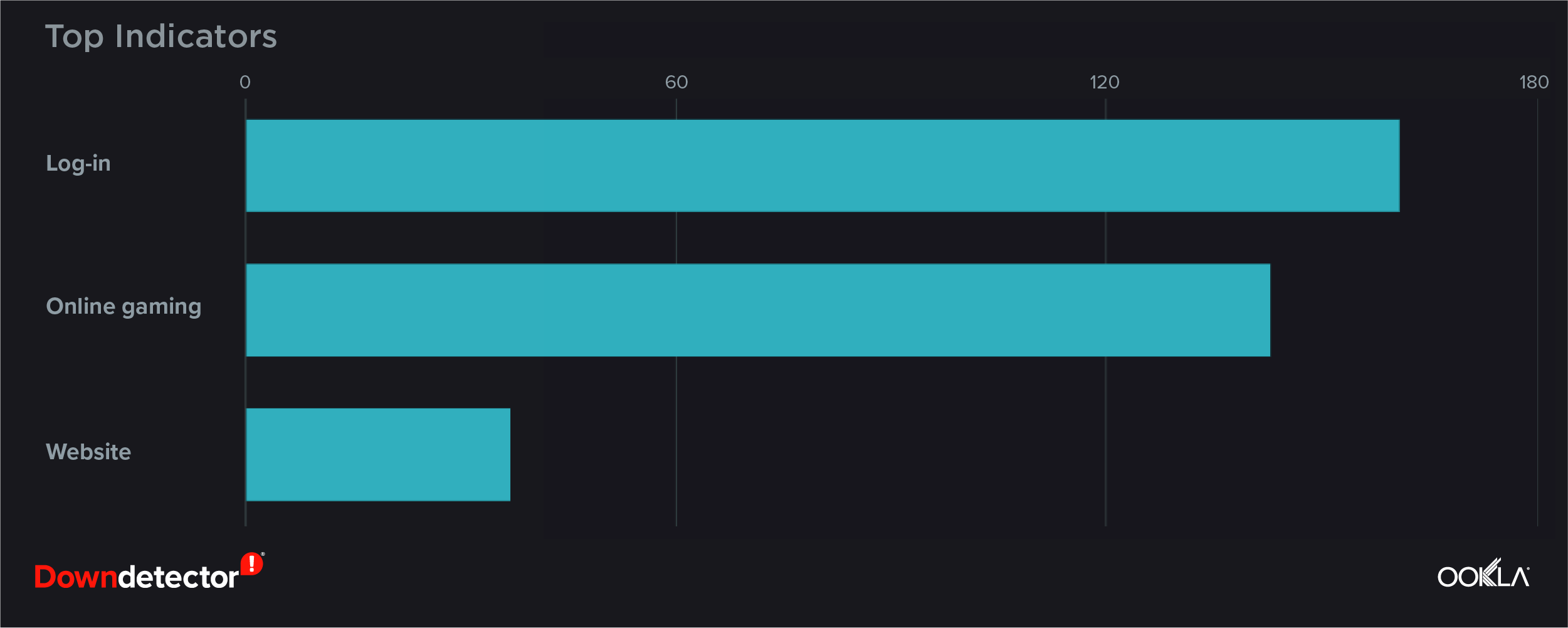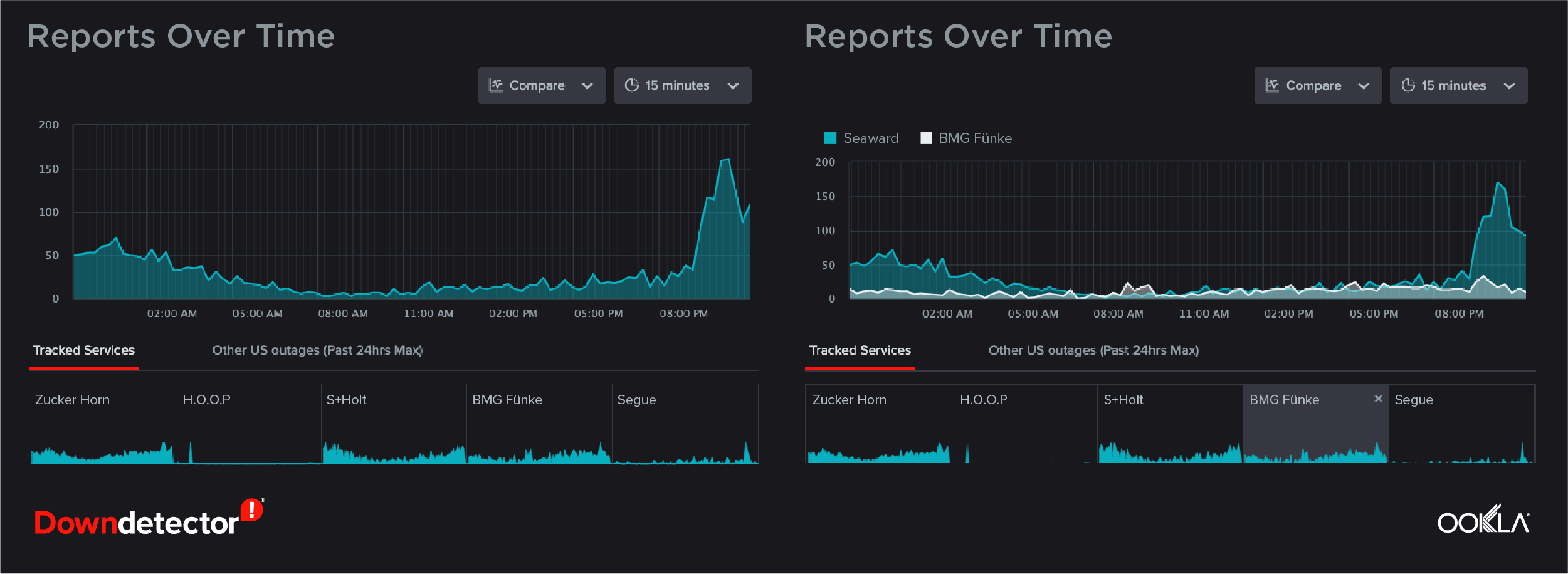

“We’re experiencing problems at the moment” became an all-too-familiar phrase during the first three months of 2020. As we continue with our series of most significant outages across the globe, this article examines major web and online service outages from Q1 2020 using Downdetector® data. Outages came under increased scrutiny as COVID-19 spread and more people began working or studying from home, gaming, video conferencing and using more online services than ever before. However, we saw significant outages both before and after this time. The six categories of outages we’re highlighting here are: collaboration platforms, gaming, telecom operators, streaming services, social media and financial institutions.
Collaboration platforms
Google Drive (January 27, 2020): 24,558 outage reports at peak
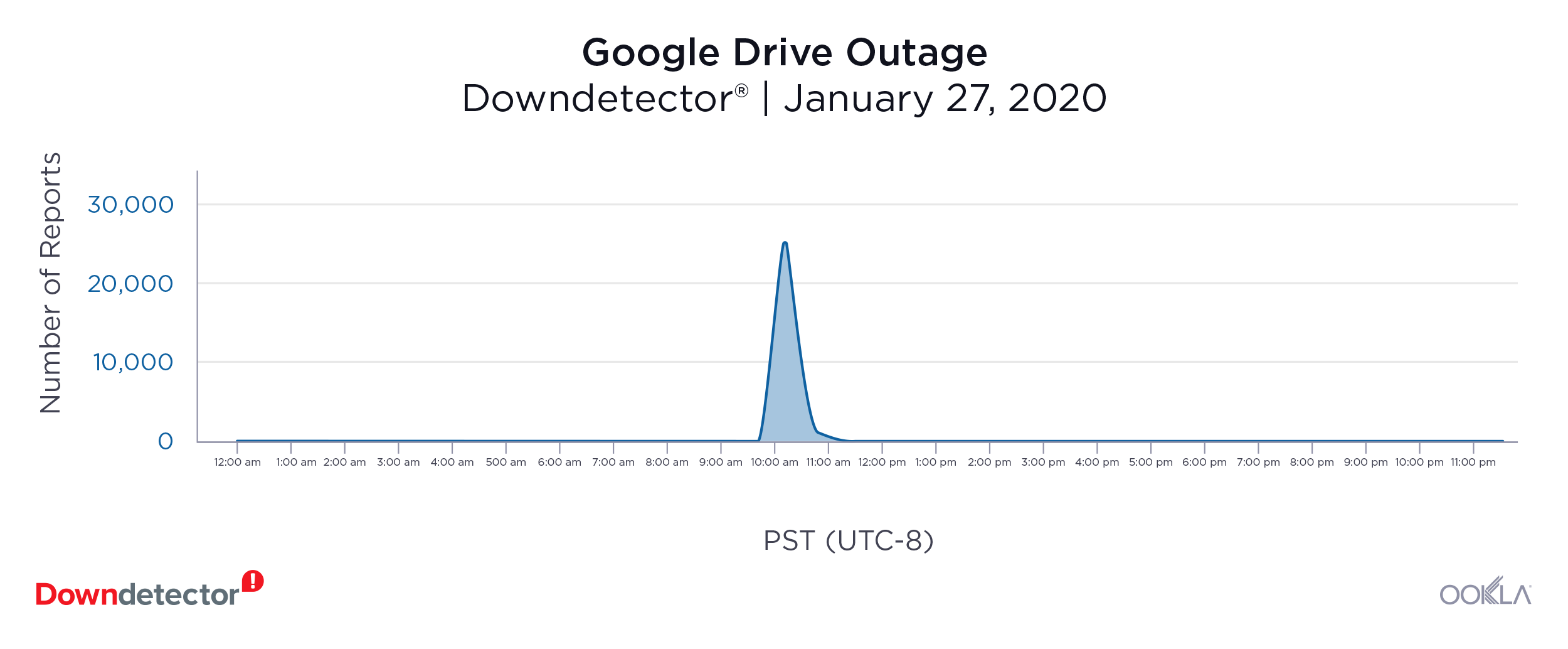
Users of Google’s popular file storage and synchronization service rushed to Downdetector when receiving the following error message: “Google Docs encountered an error. Please try reloading this page, or coming back to it in a few minutes.” on January 27. The outage reportedly lasted an hour and Downdetector received 24,558 reports during the peak fifteen minutes of the outage. Most reports originated from the US, but users also reported problems in Germany, Japan, Mexico, the Netherlands and the UK.
Zoom (March 20, 2020): 1,483 reports at peak
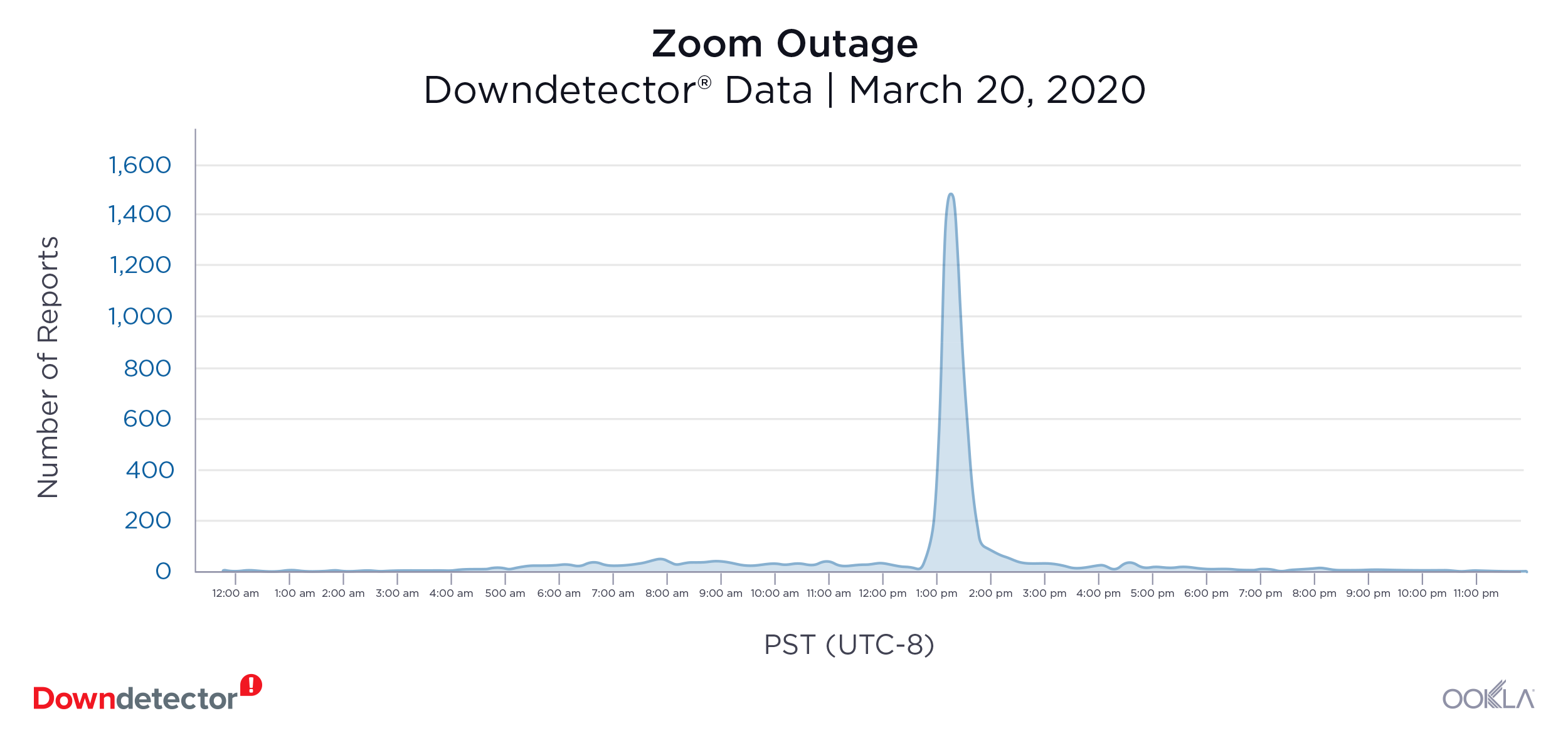
Video conferencing software like Zoom has become an important tool to communicate. Amid an increase in volume, Zoom users, mostly in the U.S., reported an outage on March 20 that left people unable to access the service or make calls. The service also experienced a smaller outage on March 5 with 586 reports at the peak. Both outages lasted approximately two hours.
Microsoft Teams (March 16): Multiple outages
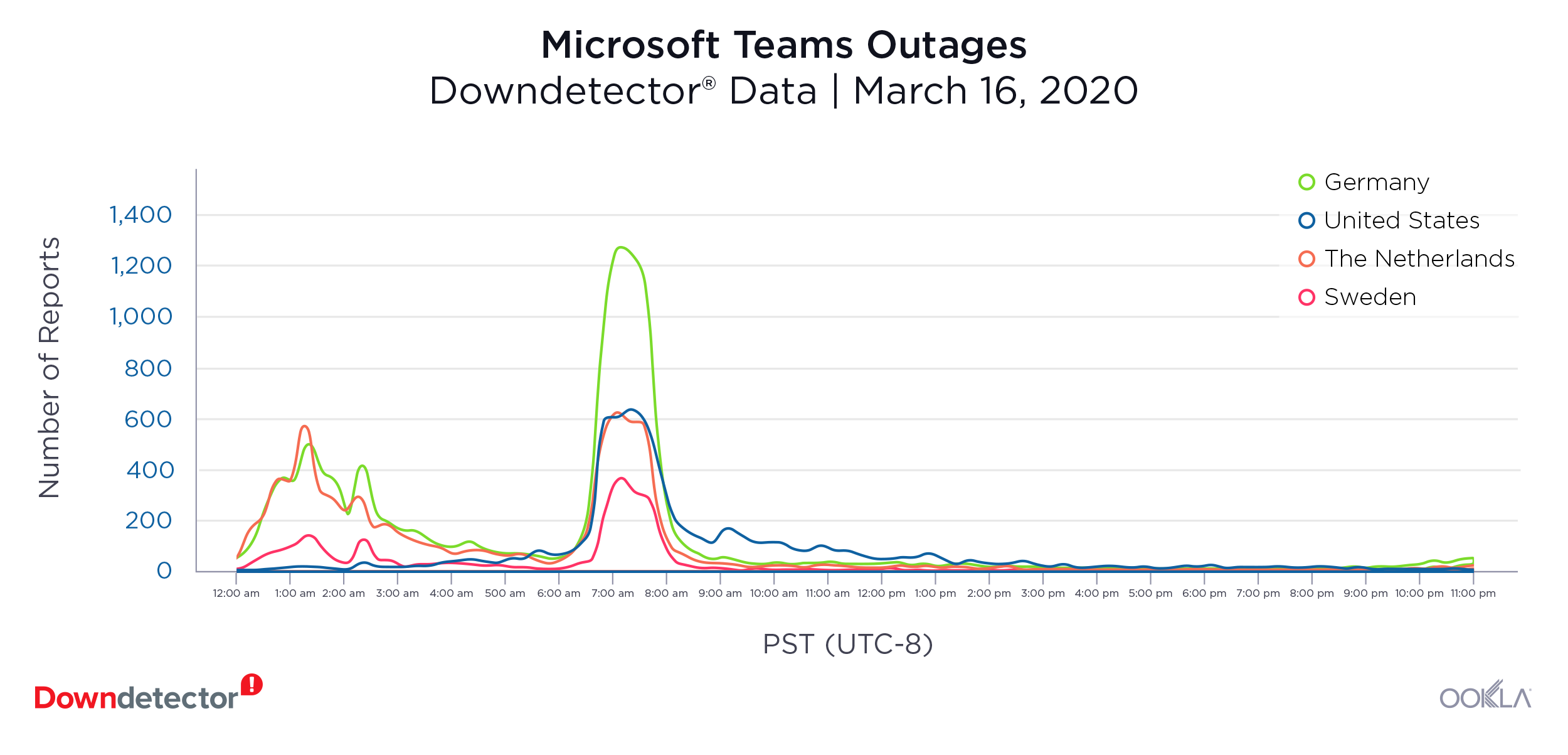
Microsoft Teams experienced a worldwide outage on March 16. The collaboration platform that streamlines communication in an organization was reportedly down for users in Germany, the Netherlands, Sweden and the U.S. The duration of the outage varied by country, but lasted more than six hours in most and recurred in the Netherlands for a period on March 17. Teams also experienced a significant outage over the span of five hours on February 2 when 9,386 users in the U.S. reported problems at the peak.
Gaming
Steam (multiple outages)
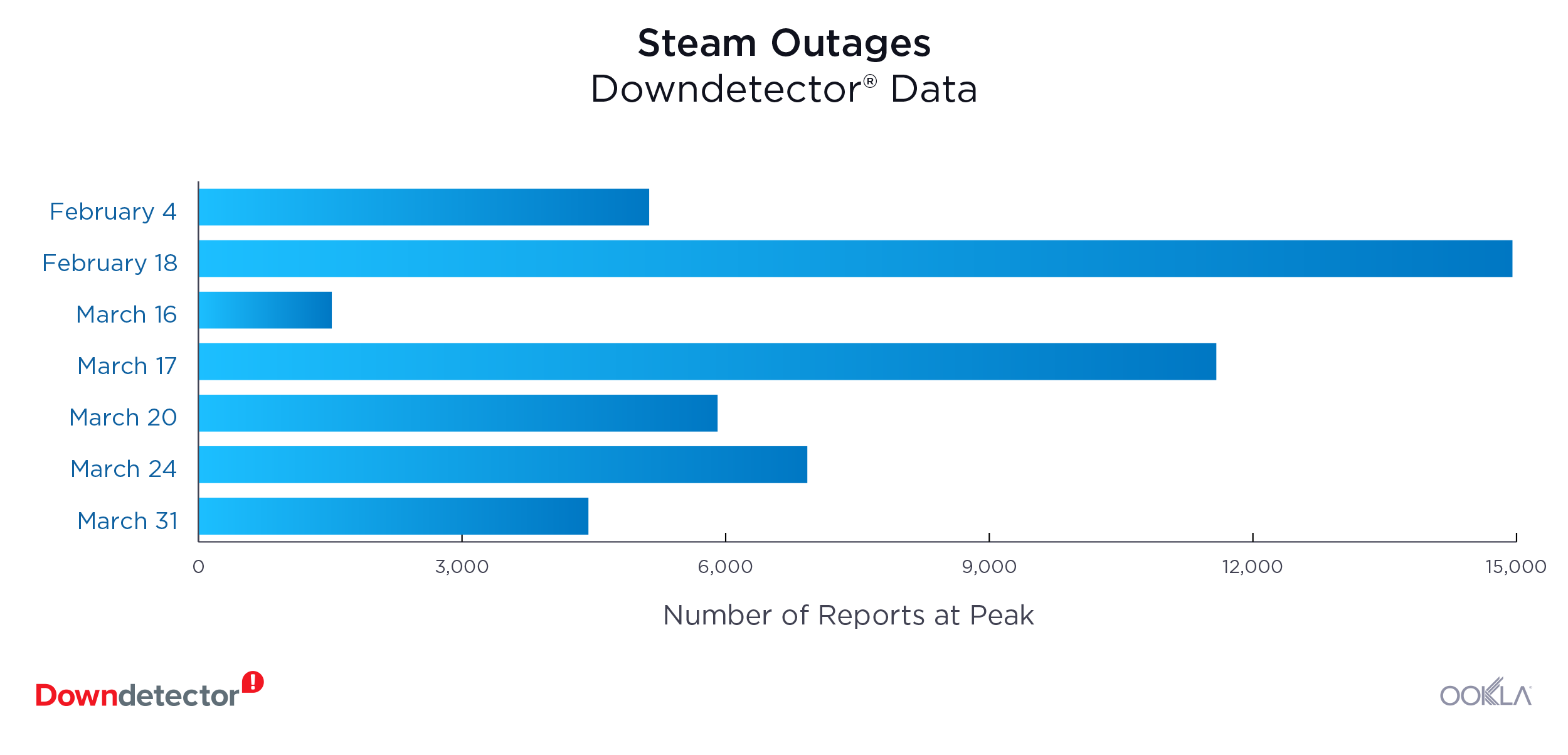
Steam suffered nine major outages during Q1 2020 (seven of which are pictured above), according to reports from users in Germany, the U.K. and the U.S. The largest outage took place on February 18 when the gaming platform was down for about three hours and 14,955 users reported issues at the peak of the outage. Steam users rushed to Downdetector again on March 17, which was Steam’s second largest outage with 11,585 reports at the peak of the outage. The two subsequent Tuesdays also proved problematic for Steam with 6,931 outages during the peak on March 24 and 4,440 outages during the March 31 peak.
Call of Duty (March 15): 7,761 outages at peak
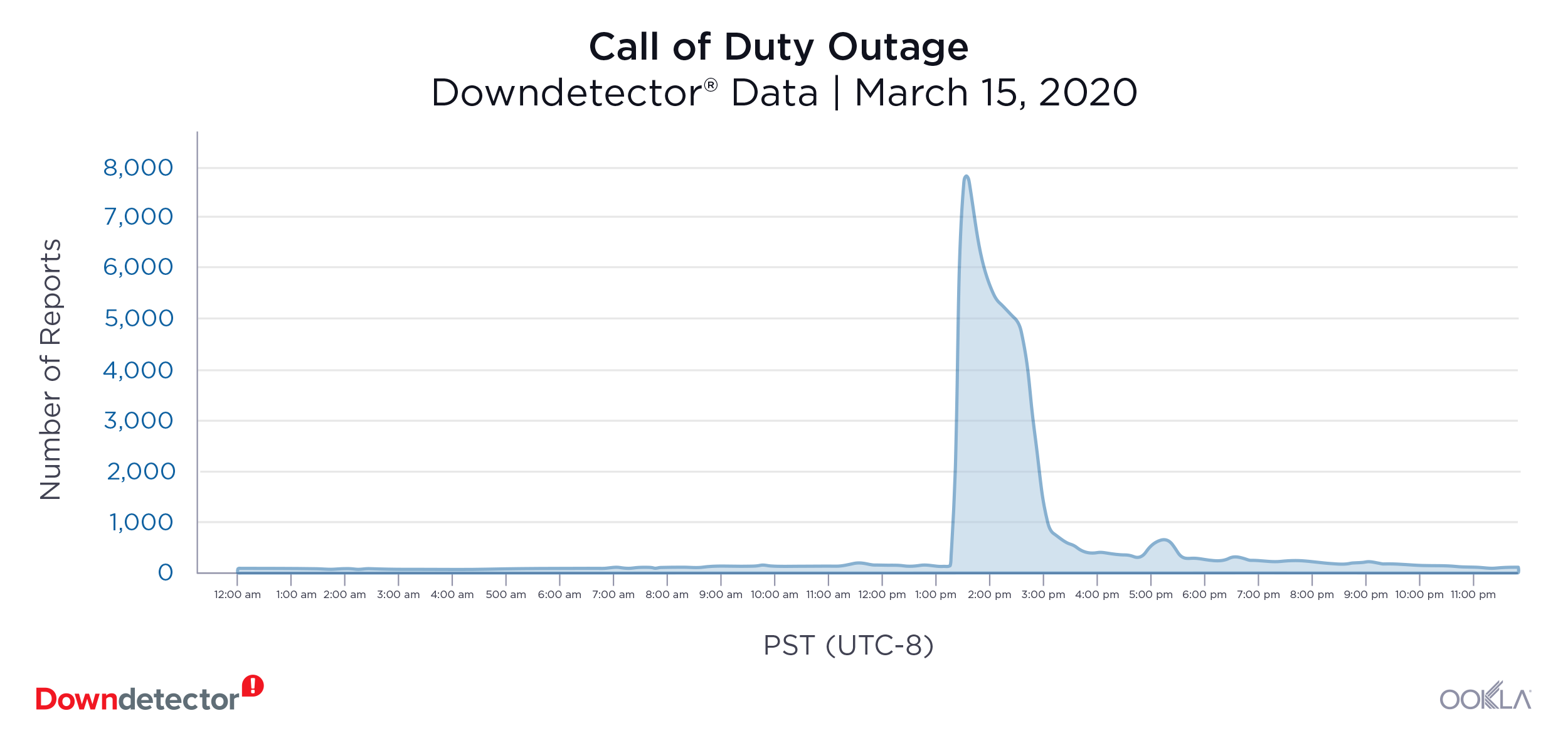
Users in the U.S. reported multiple Call of Duty outages during Q1 2020. The largest outage took place on March 15, with 7,761 reports at the peak of an outage that primarily affected the server connection of the gaming platform. Gamers were unable to play with friends for about four hours that day. On March 17, Call of Duty had a smaller outage with 3,549 reports at peak.
Fortnite (March 17): 3,998 reports at peak

On March 17, Fornite tweeted “We’re currently investigating issues with logins, matchmaking, the Item Shop, and other Fortnight services. We’ll provide an update when these are resolved,” after users reported having problems with the gaming platform. Users were unable to access Fornite for about four hours that day. Most of the reports came from France, Germany, Japan, the Netherlands, Spain, the U.K. and the U.S.
Telecom providers
Italy
TIM Italy (March 12): 2,667 reports at peak
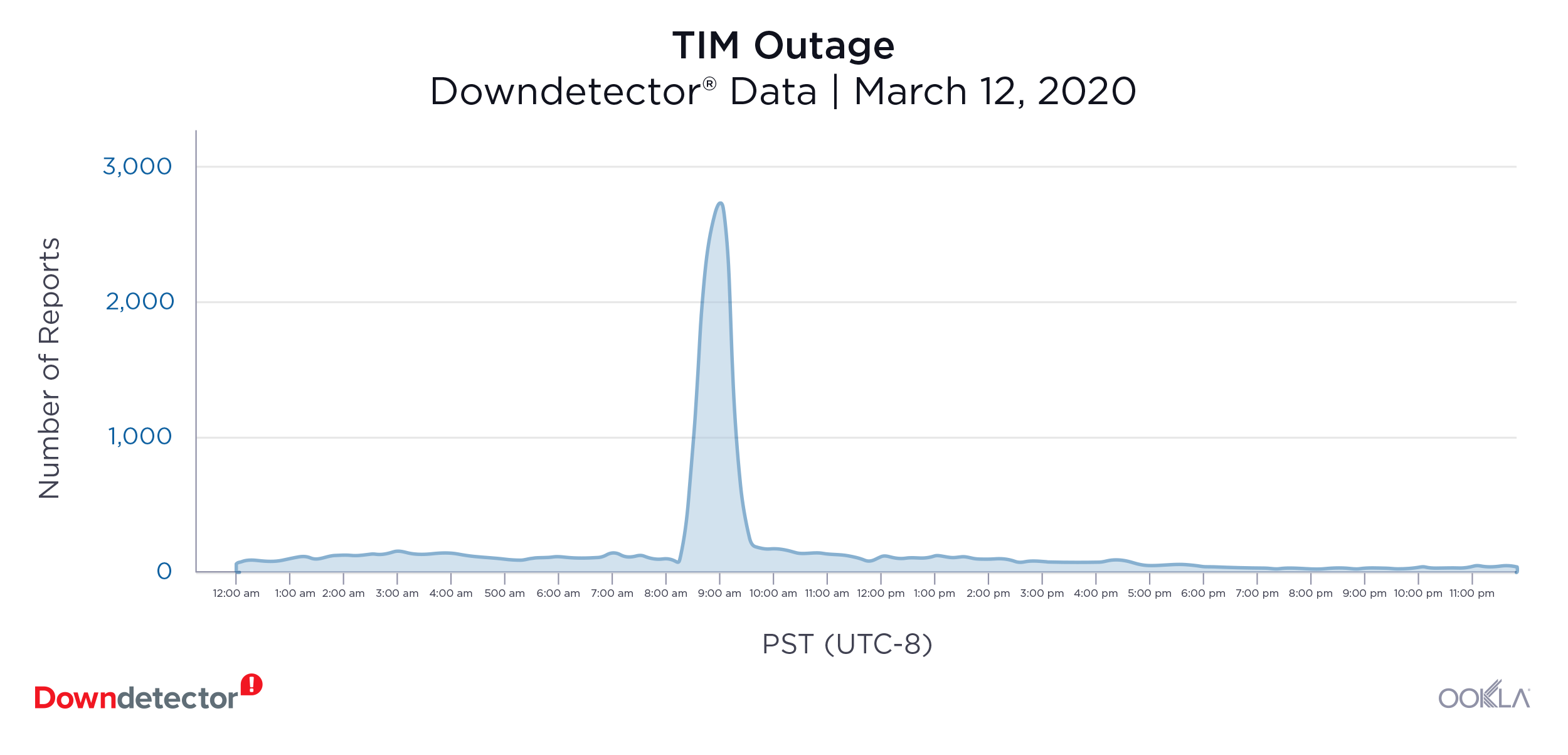
Users throughout Italy flooded Downdetector with reports of problems with their mobile internet connections on March 12. The outage lasted close to an hour and showed 2,667 reports at the peak of the outage. TIM had a smaller outage the day before with 1,337 reports at the peak of the outage.
Vodafone Italy (February 14th): 1,733 reports at peak
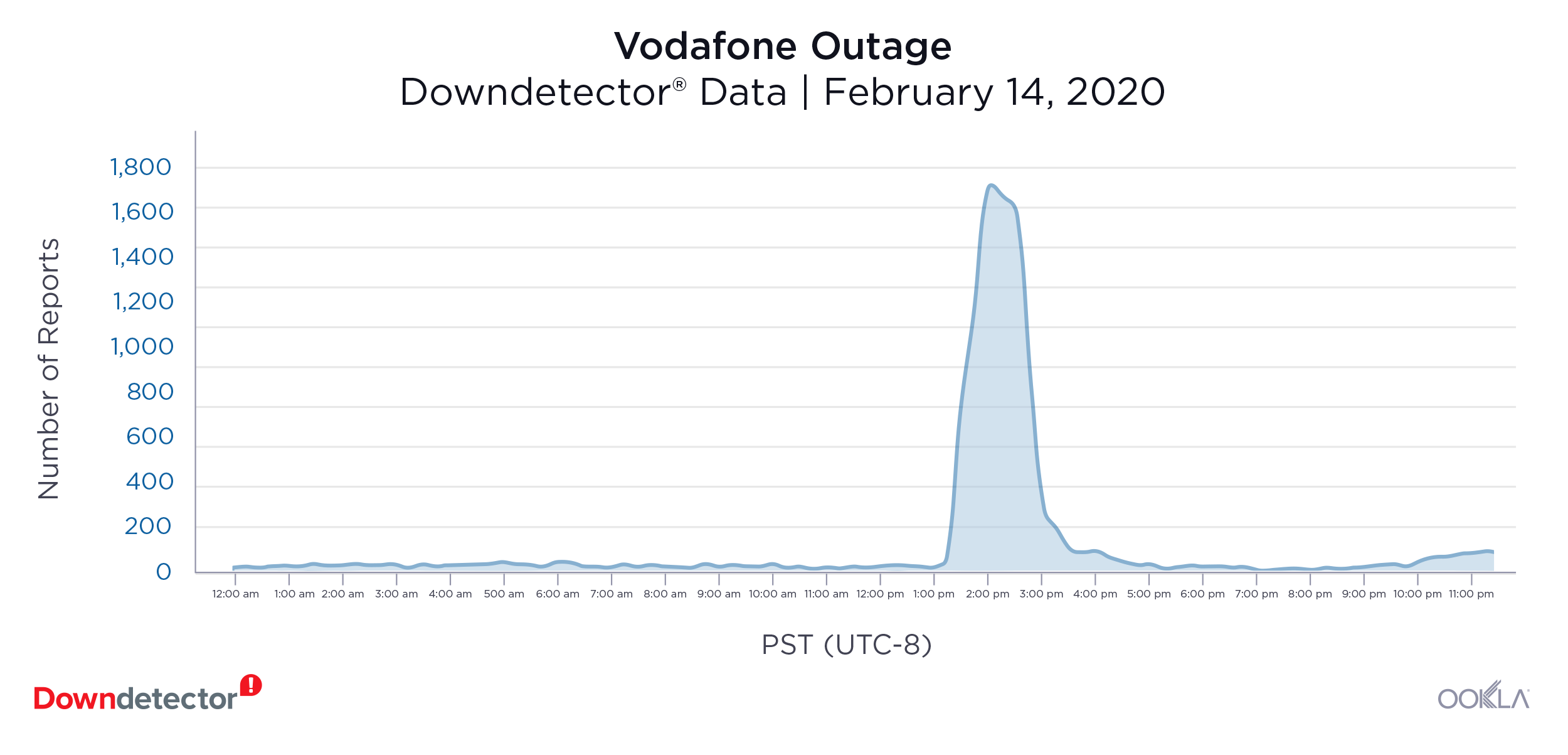
Vodafone users in Italy reported having problems with their mobile service on February 14. The outage lasted four hours and peaked at 1,733 reports. Users also reported problems with their mobile internet connection.
United States
Comcast (January 23): 39,638 reports at peak

The U.S. internet service provider experienced a major outage on January 23. The outage lasted for two hours with 39,638 reports at the peak of the outage. Weeks later, the service experienced a smaller outage on March 3 with 1,124 reports during the peak.
United Kingdom
Virgin Media (March 4-5): 4,348 reports at peak

Users in the U.K. reported their internet service was not working during Virgin Media’s outage starting on March 4 and continuing through March 5. The outage peaked on March 5 when 4,348 users reported issues.
Social Media
Twitter (February 7): 11,542 reports at peak
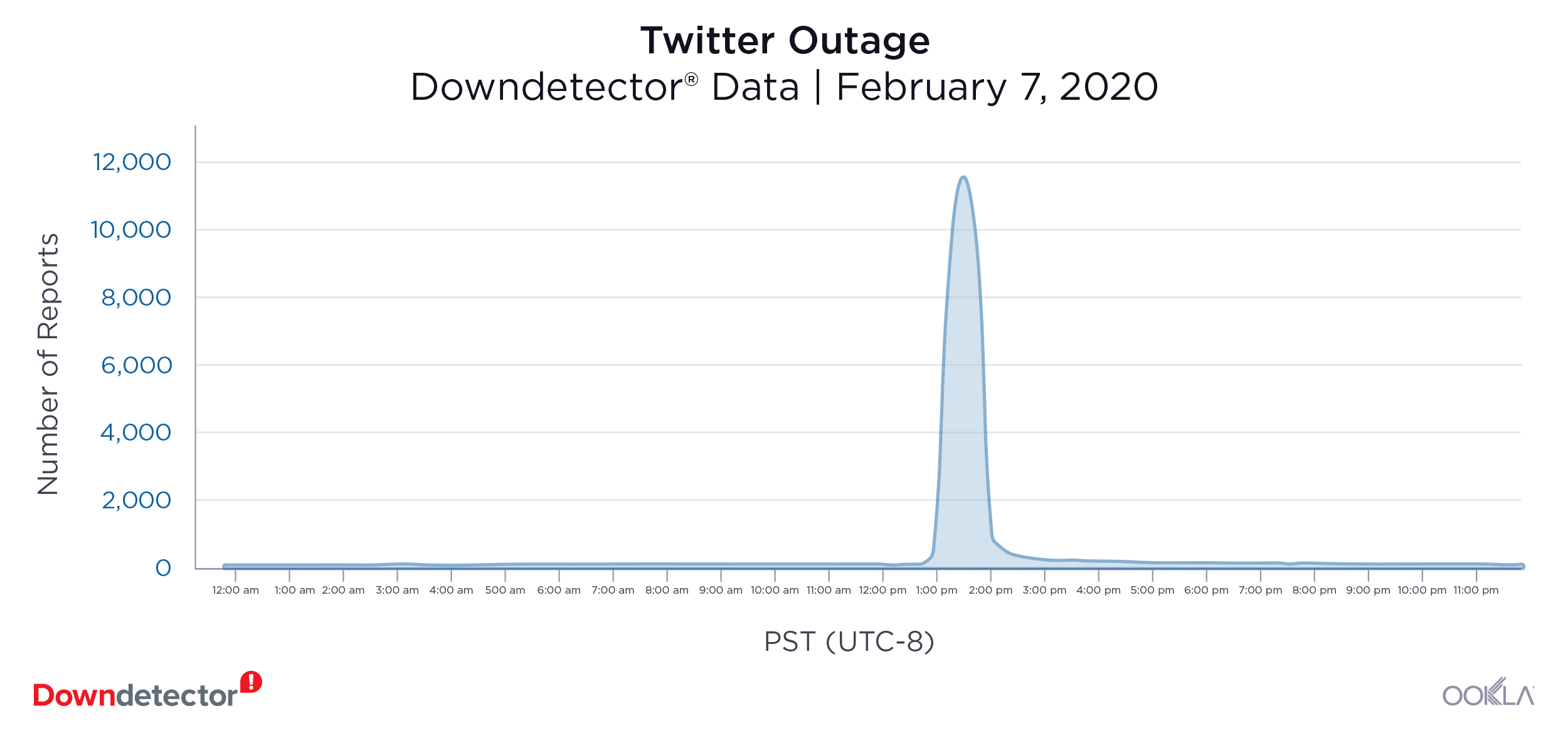
The largest social media outage in Q1 2020 belonged to Twitter. On February 7, users in the Twitterverse were unable to tweet, retweet or like tweets for about two hours. Over 11,500 U.S. users reported problems during the peak of the outage. Users in Germany, Japan and the U.K. also reported problems with the platform.
Facebook (January 24-25): 3,718 reports at peak
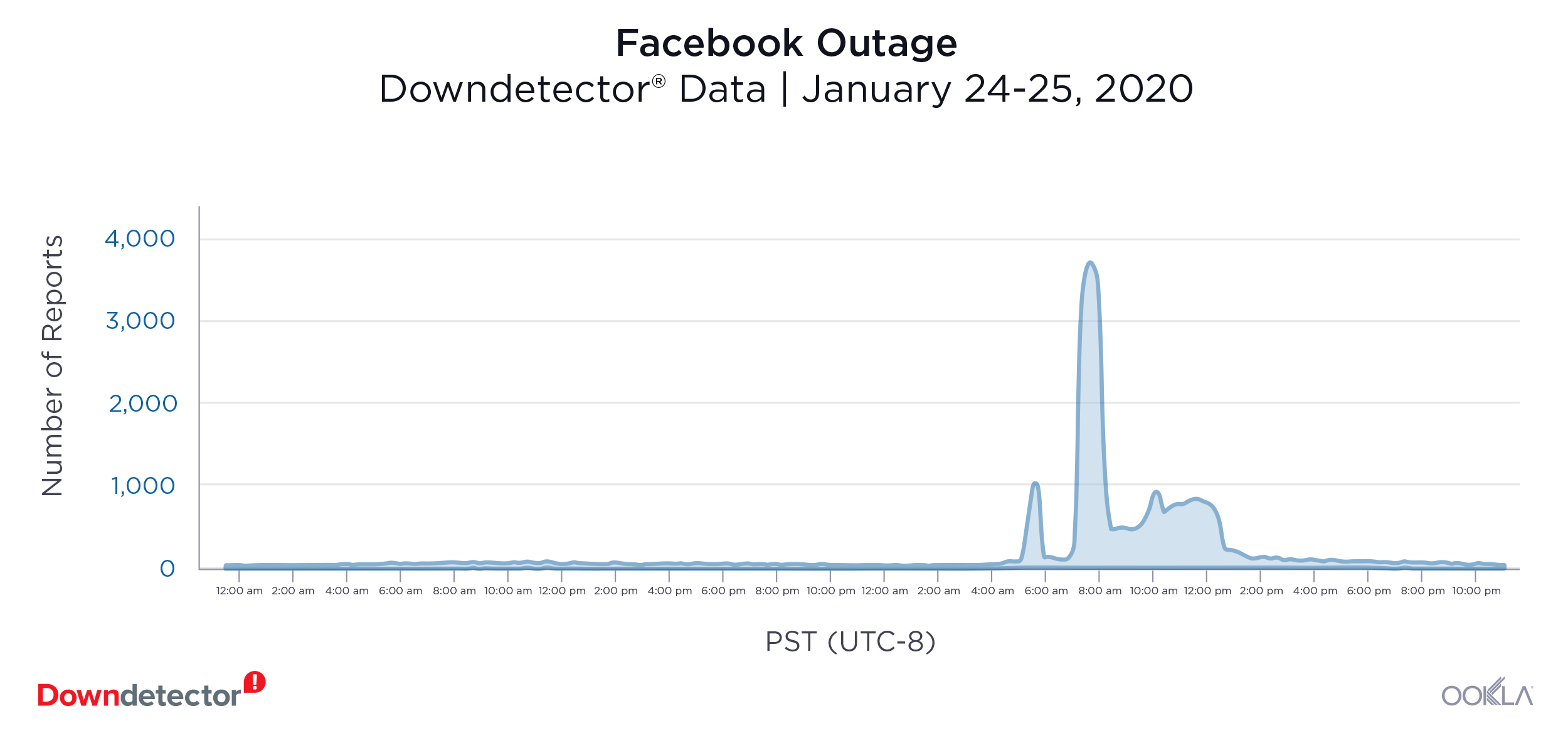
Facebook users reported problems with the site on Downdetector starting on January 24. Most users reported problems with their newsfeed or the inability to log in to the social media platform. At the peak of the outage, there were 3,718 reports from users in the U.S. Users in Germany and the U.K. also reported problems that day. Users were still experiencing issues through January 25.
Streaming Services
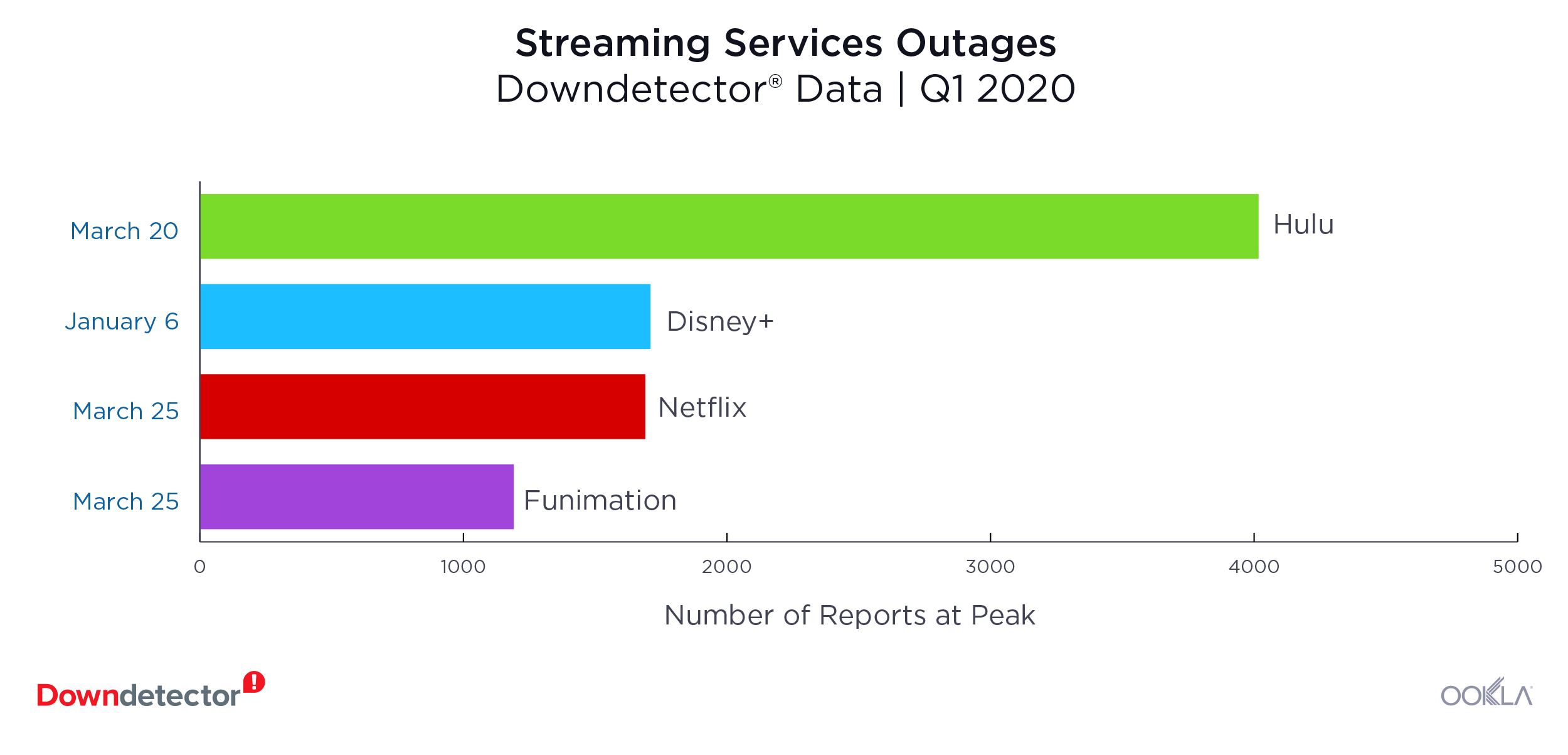
Hulu (March 20): 4,017 reports at peak
People hoping to binge-watch their favorite shows while in quarantine were disappointed to find Hulu was down on March 20. Users complaints on Downdetector included not being able to log in or of the player not working properly. The outage lasted approximately two hours.
Disney+ (January 6): 1,710 reports at peak
Disney + experienced an outage at the beginning of Q1 2020 that reached 1,710 reports at the peak. For an hour, users in the U.S. reported they were unable to log in to the platform.
Netflix (March 25): 1,690 reports at peak
For two hours on March 25, thousands of Netflix users were unable to stream their favorite shows. At the peak of Nexflix’s biggest outage in Q1 2020, 1,690 users reported problems in the U.S.
Funimation (March 25): 1,191 reports at peak
Anime lovers in the US reported problems with Funimation towards the end of Q1 2020. Most users complained of not being able to log in to the service for about an hour that day. There were 1,191 reports at the peak of the outage.
Financial Services
Robinhood (multiple outages)

Robinhood had multiple fumbles during Q1 2020, leaving users frustrated with the financial service. The most significant outage took place on March 2 with 14,429 reports at the peak of the outage. Robin Hood experienced additional outages on March 3 and March 9 with 3,538 and 3,119 reports during the respective peaks.
Is an outage disrupting your day? You’re not alone. Find out if there’s an outage and bond with other frustrated users on Downdetector and read about other significant outages here.
Editor’s note: This article was updated on April 14 to clarify the Steam section and related graphic.
Ookla retains ownership of this article including all of the intellectual property rights, data, content graphs and analysis. This article may not be quoted, reproduced, distributed or published for any commercial purpose without prior consent. Members of the press and others using the findings in this article for non-commercial purposes are welcome to publicly share and link to report information with attribution to Ookla.



